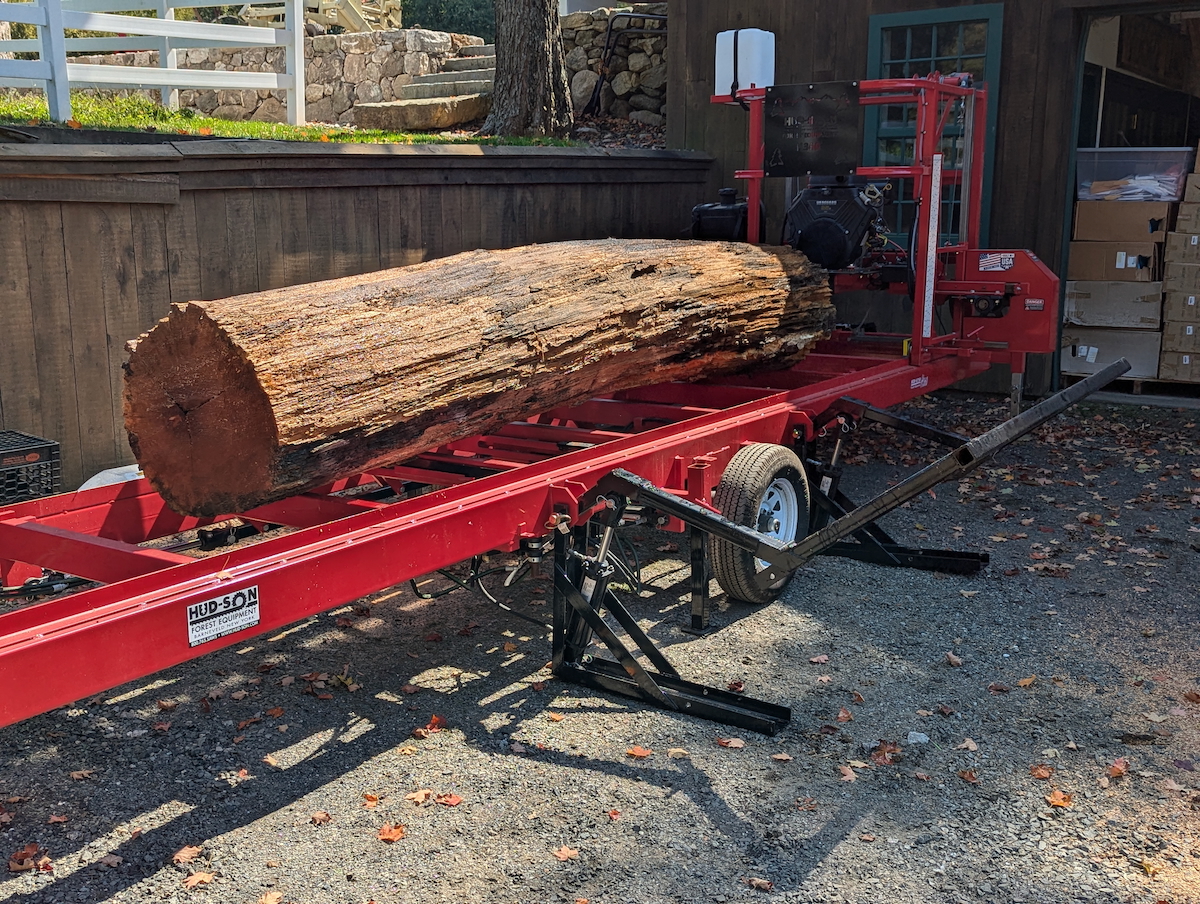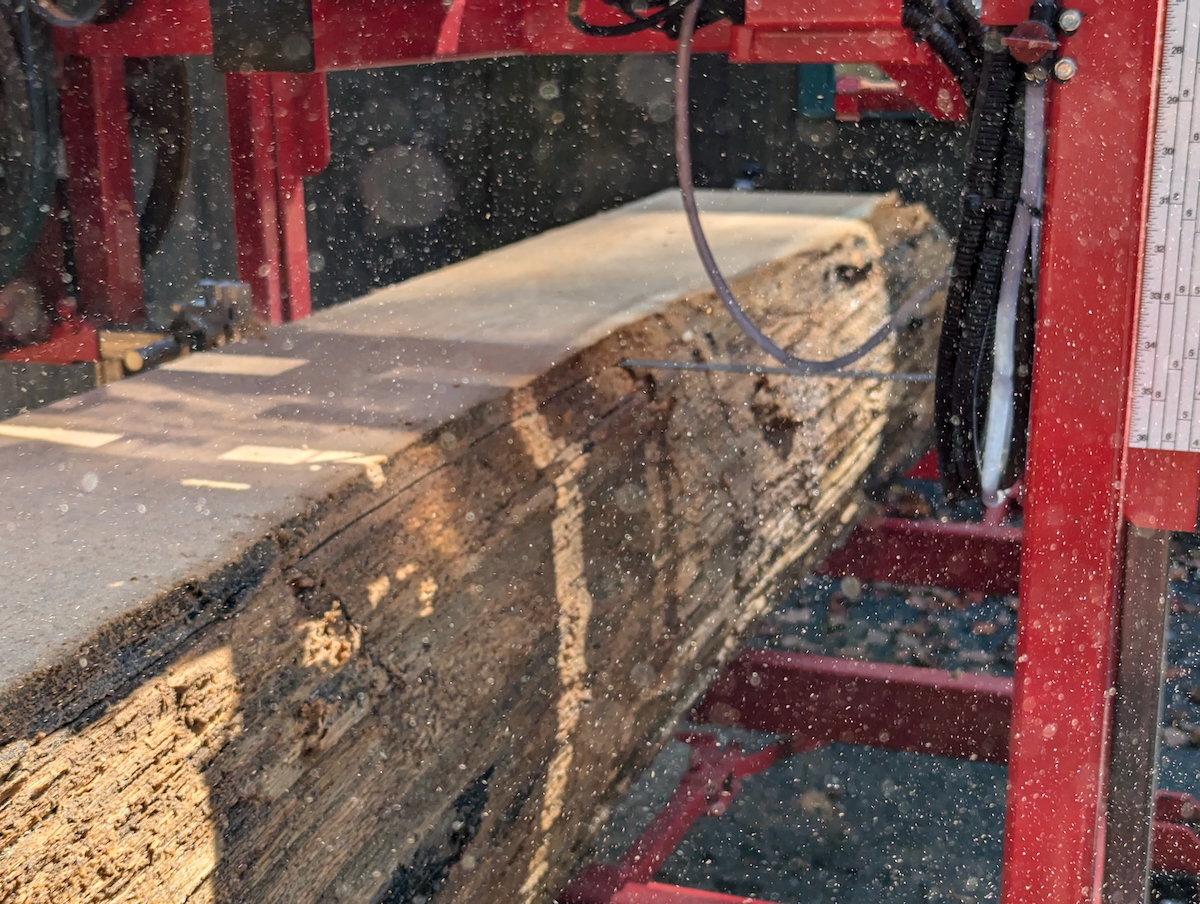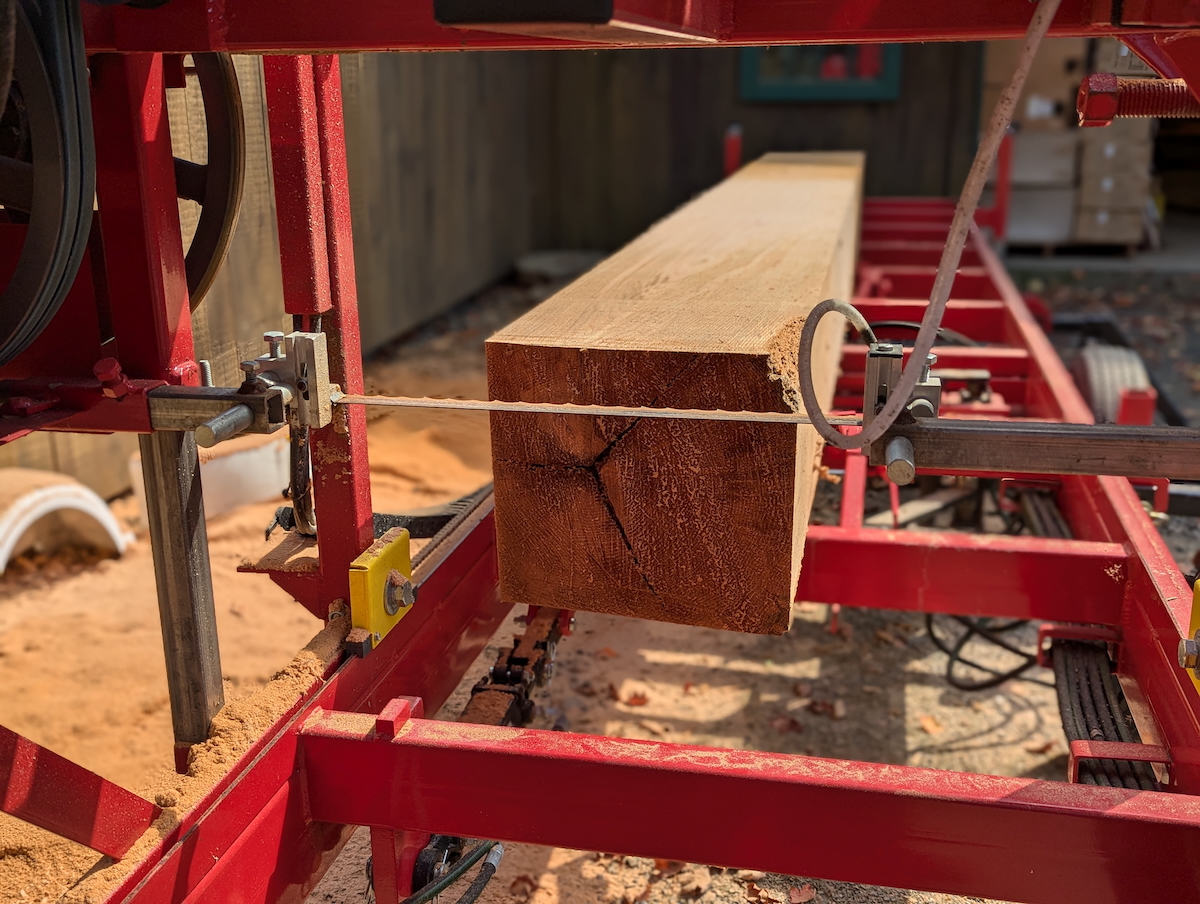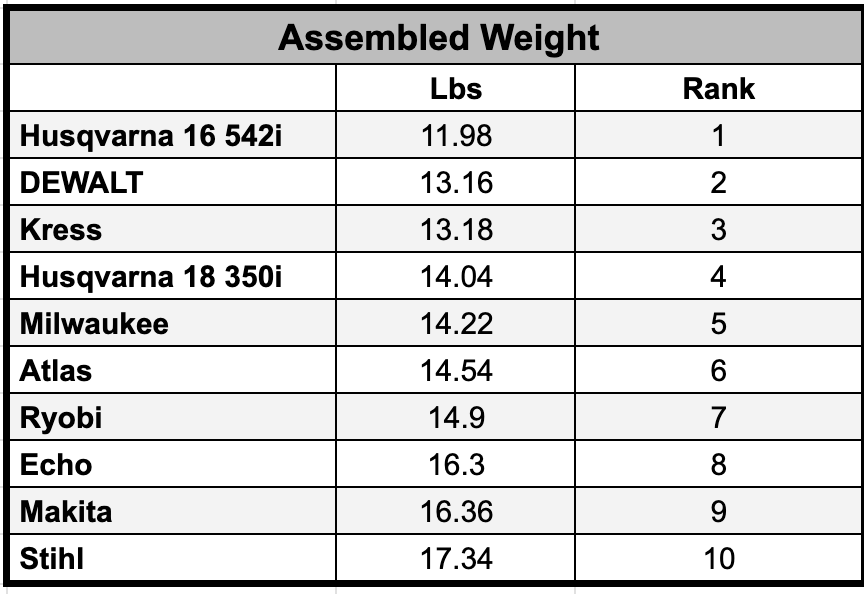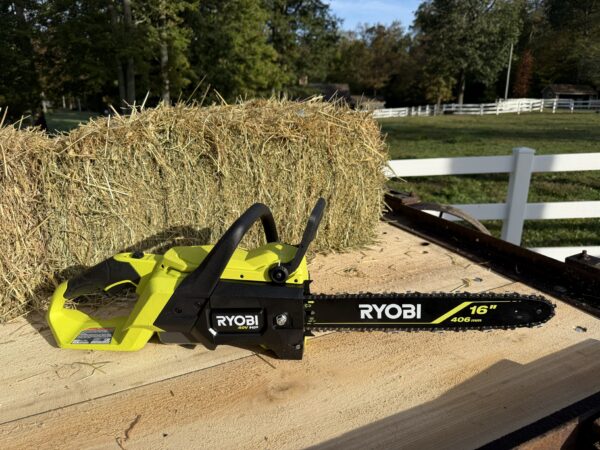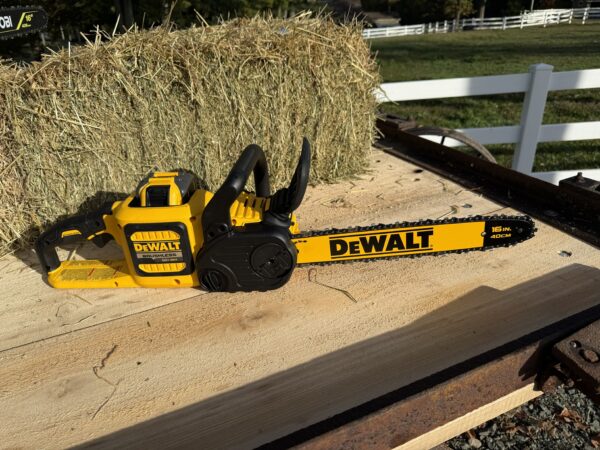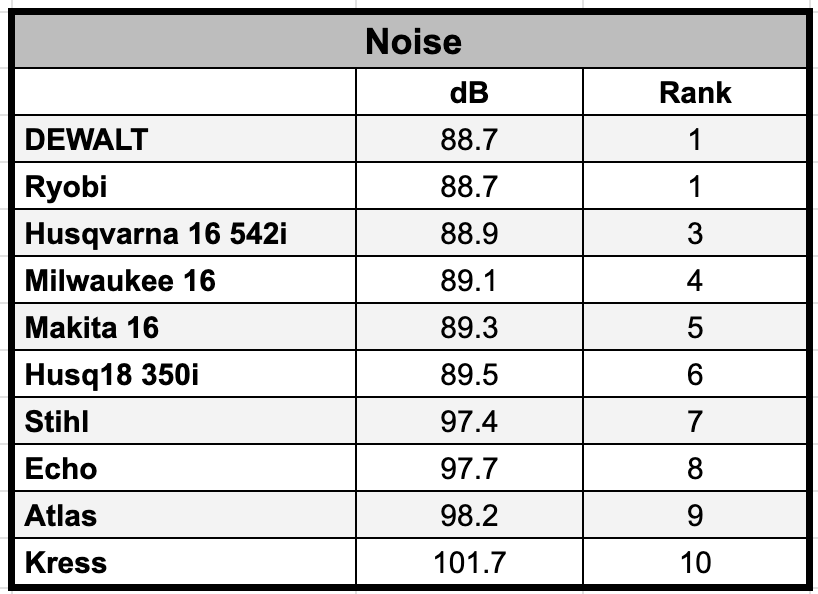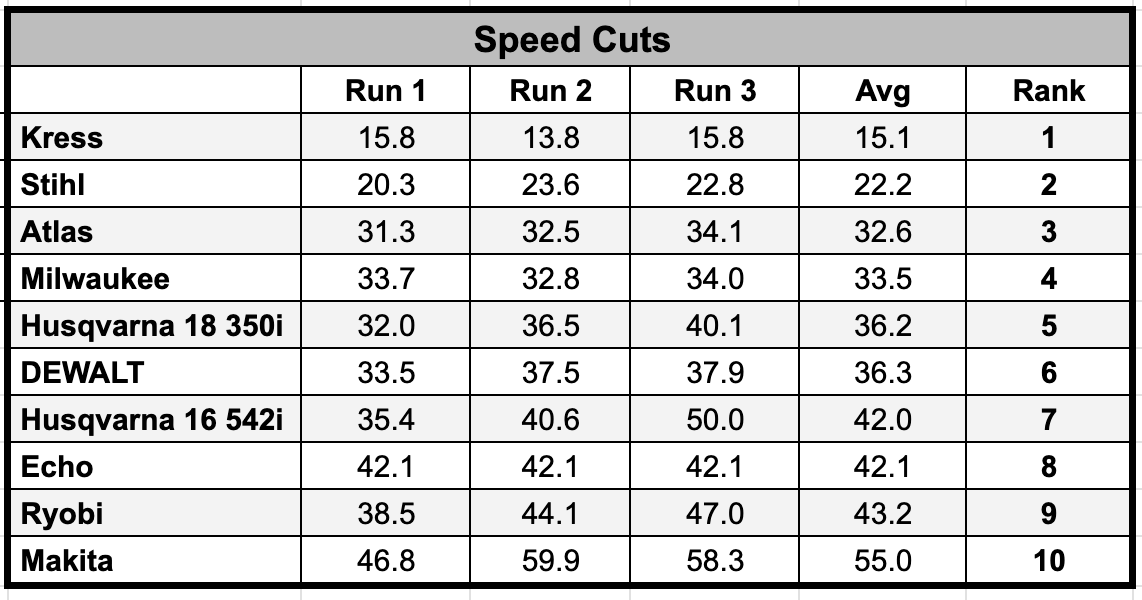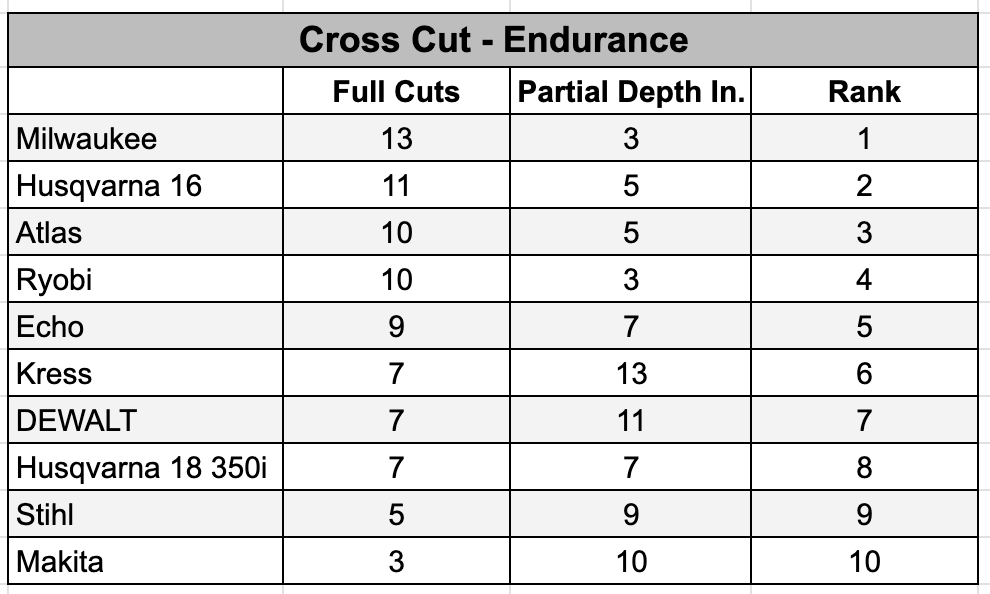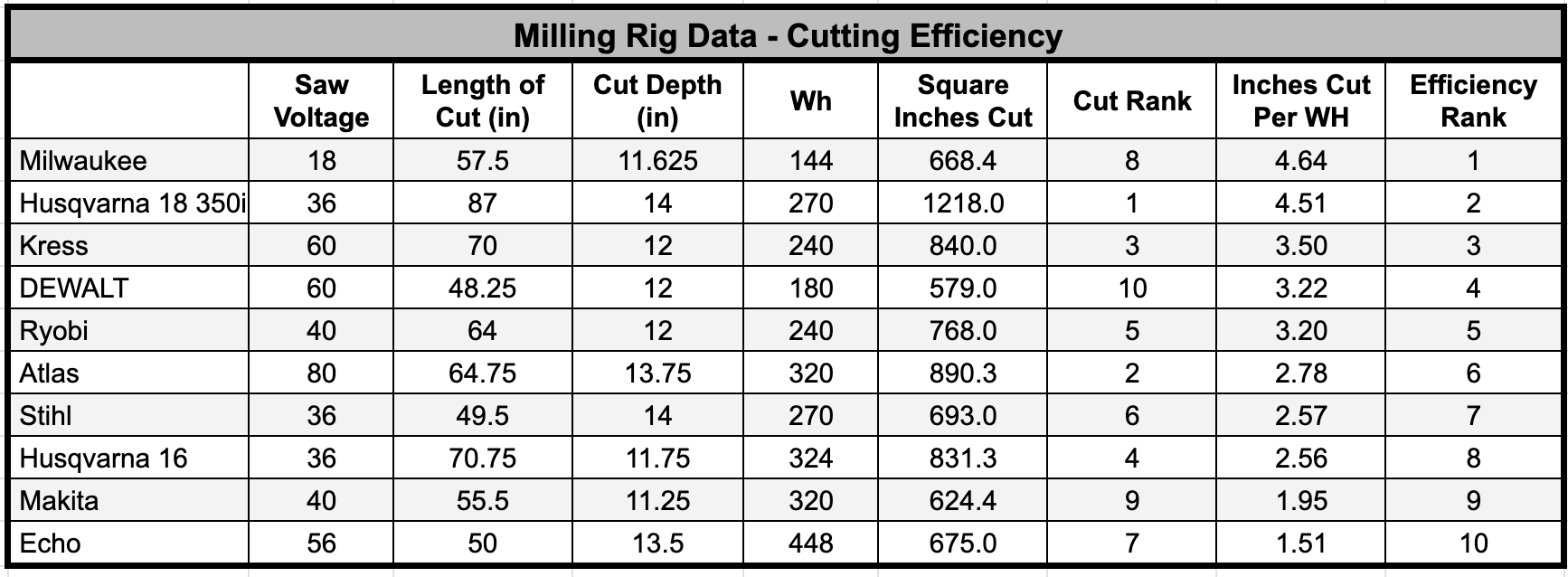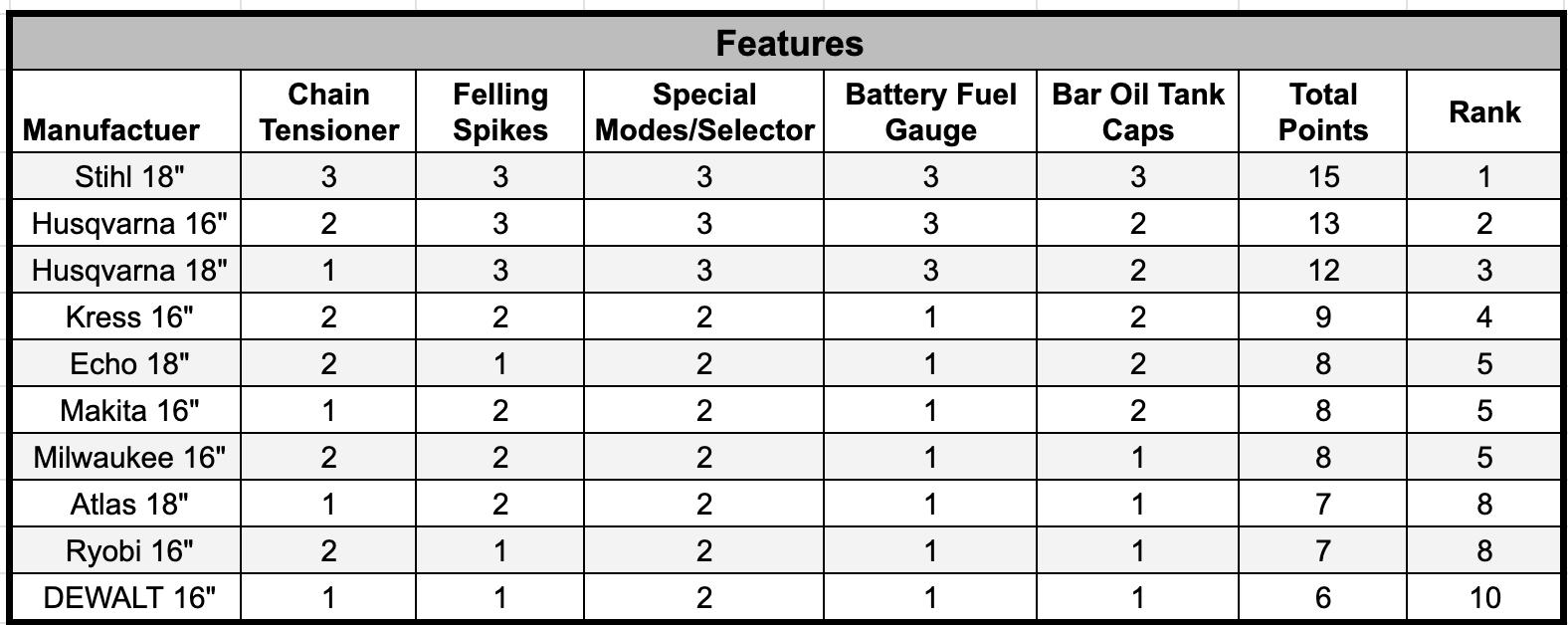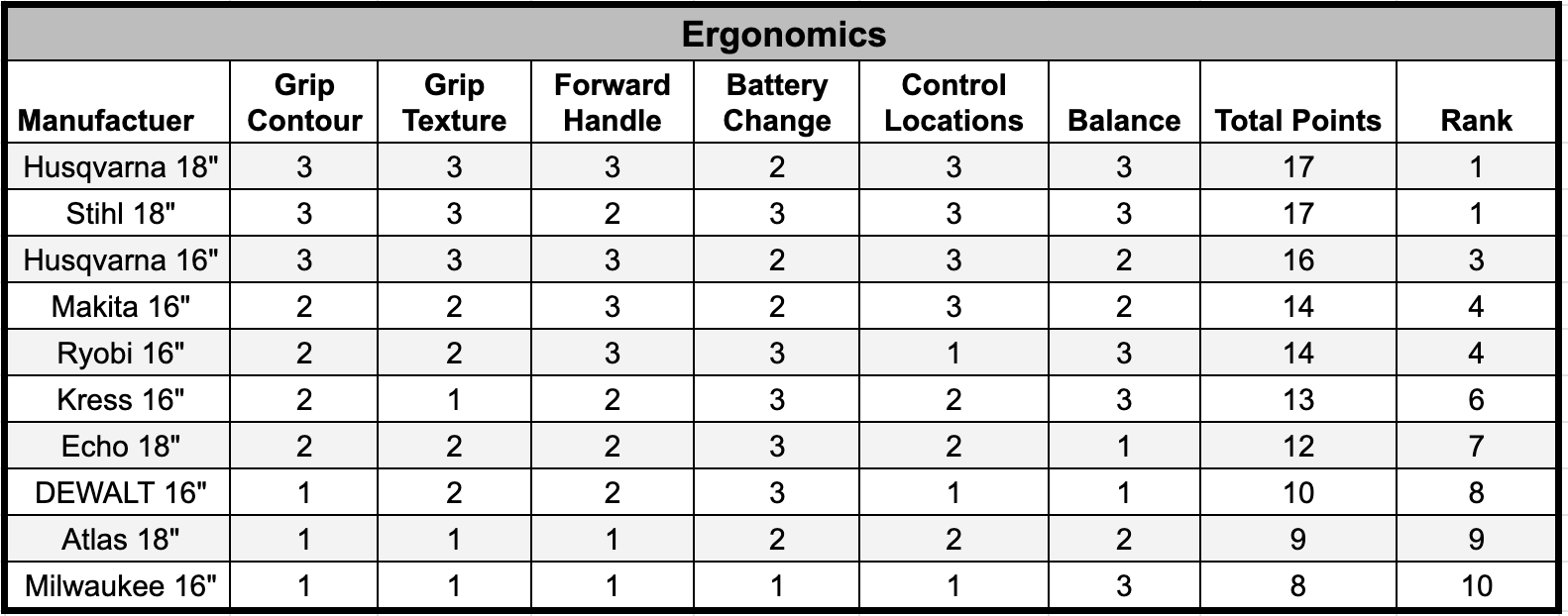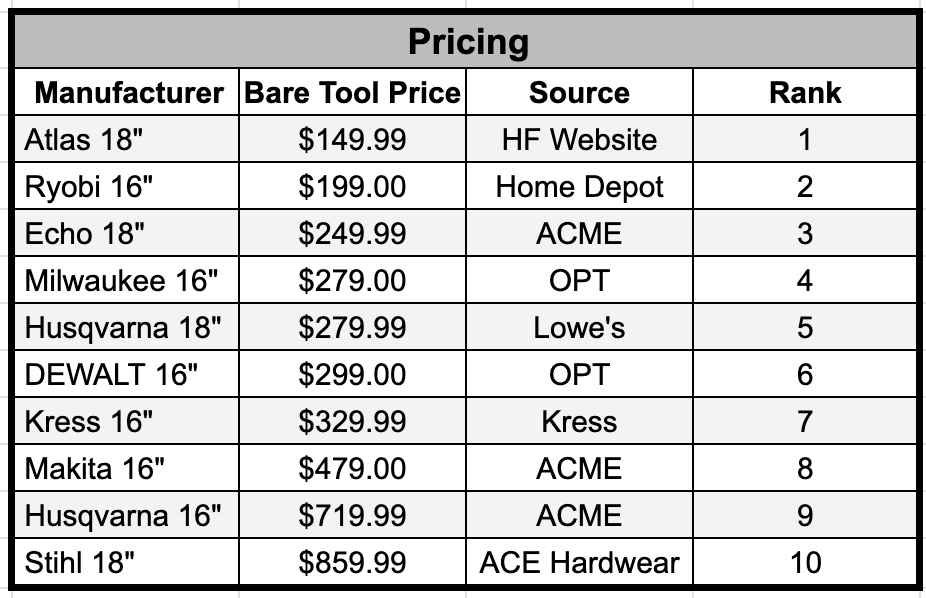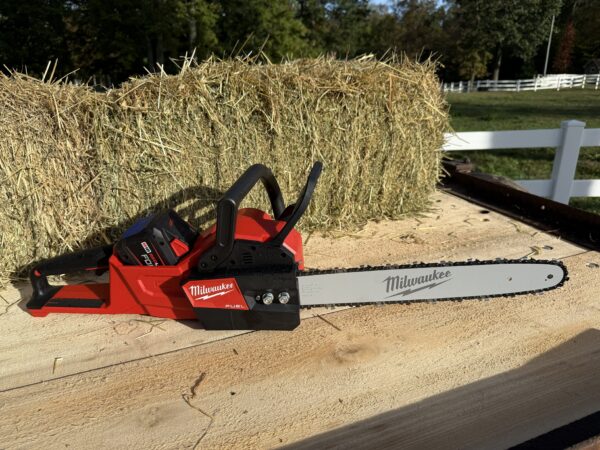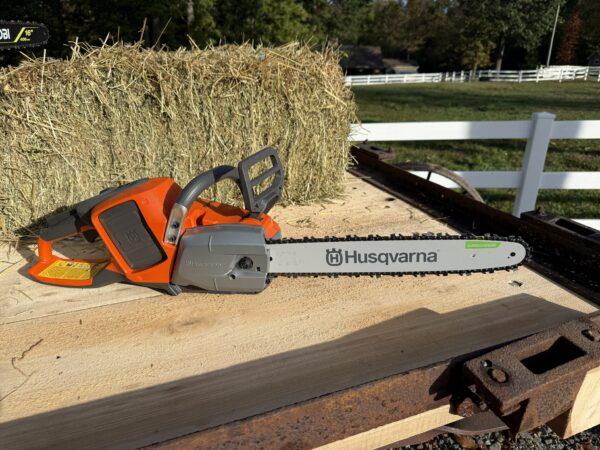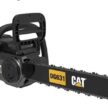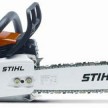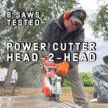Best Battery Chainsaw Head-to-Head |16″–18″ Bar Range | 2025
Best Battery Chainsaws 2025: Comparison of 16″–18″ Bar Models
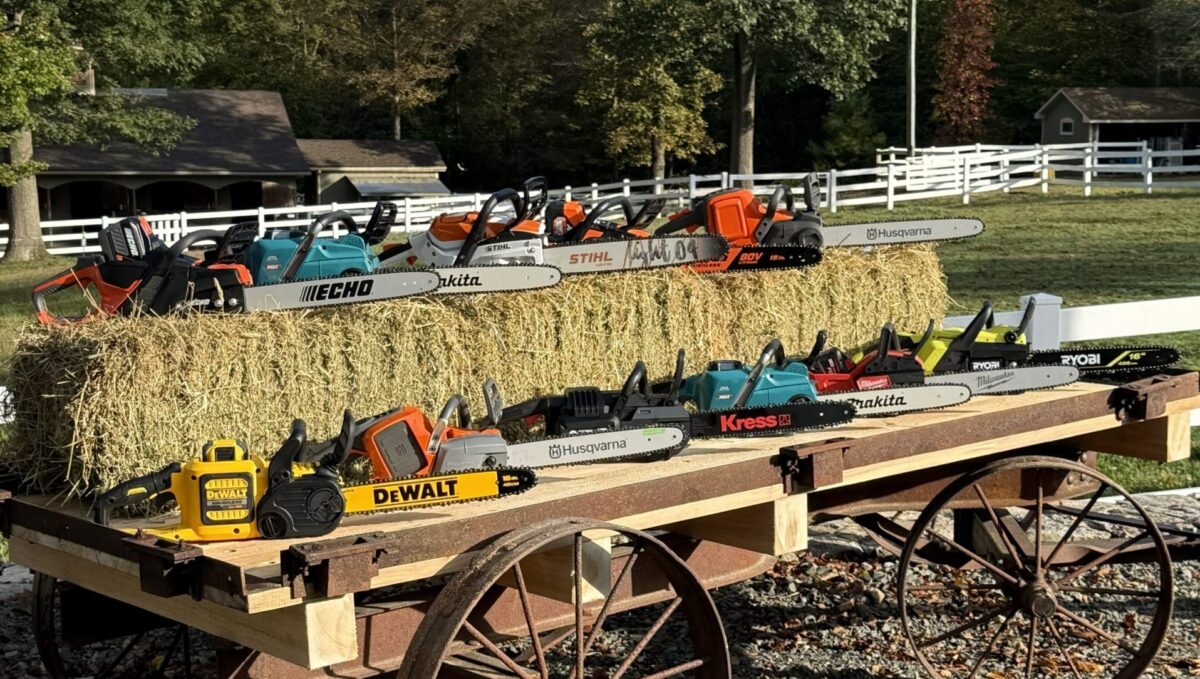
The Tool Lab Crew recently wrapped up our updated Best Battery Chainsaw Head-to-Head comparison, focusing on chainsaws in the 16″ to 18″ bar range. Our first major test of rear-handle battery-powered chainsaws took place back in Fall 2020. At the time, we were impressed by what some of those saws could do. But the tool world never stays still—and the technology has come a long way since then.
To capture those advancements, we developed a series of tests and evaluation criteria aimed at showcasing the performance, power, and user experience of today’s battery chainsaws. We then put them to work.

Our test crew included professional arborists and other seasoned pros from the timber and forestry products industry. Their hands-on expertise provided an authentic and rigorous perspective—exactly how a daily user would approach and evaluate each tool.
Fun fact:
The first commercial electric chainsaw was developed by Andreas Stihl in 1926. It was large, heavy, and required two people to operate—but it revolutionized forestry work. Now, 99 years later, battery-powered chainsaws are not only compact and powerful, they’re quickly becoming the go-to option for both homeowners and professionals. One of the modern descendants of that original Stihl design is featured in our 2025 lineup.
Battery Chainsaw Lineup
Bar length was our primary selection factor for this test. We focused on saws with 16″–18″ bars—the go-to size for most chainsaw tasks. From felling small trees to limbing or cutting firewood, this range offers the ideal balance of versatility and performance.
We invited all major manufacturers to participate and ended up with ten saws in our lineup. Voltages ranged from 18V to 80V. To fairly evaluate such a wide range, we normalized performance data by calculating inches cut per watt hour—a standard practice in our testing process to ensure accurate comparisons across different power platforms.
Our ten participants for the 16”-18” bar and chain category are as follows:
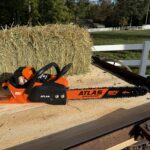
Atlas
- Model: 56937
- Voltage: 80V
- Bar Length: 18”
- Chain Gauge: .050”
- Bare Tool Weight: 8.06 Lbs
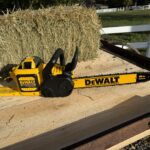
DEWALT FlexVolt
- Model: DCCS670
- Voltage: 60V
- Bar Length: 16”
- Chain Gauge: .043
- Bare Tool Weight: 8.17 Lbs
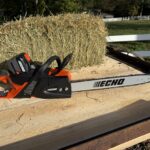
Echo
- Model: DCS-5000
- Voltage: 56V
- Bar Length: 18”
- Chain Gauge: .050”
- Bare Tool Weight: 8.42 Lbs
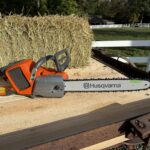
Husqvarna 542 I XP
- Model: 542i XP
- Voltage: 36V
- Bar Length: 16”
- Chain Gauge: .043”
- Bare Tool Weight: 6.98 Lbs
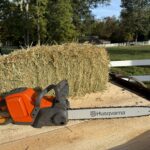
Husqvarna Power Axe
- Model: 350i
- Voltage: 36V
- Bar Length: 18”
- Chain Gauge .050”
- Bare Tool Weight: 7.8 Lbs
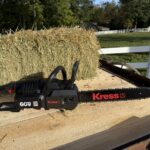
Kress
- Model: KC300.9
- Voltage: 60V
- Bar Length: 16”
- Chain Gauge: .050
- Bare Tool Weight: 7.88 Lbs
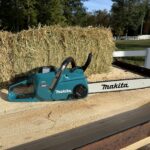
Makita XGT
- Model: GCU05
- Voltage: 40V
- Bar Length: 16”
- Chain Gauge: .050”
- Bare Tool Weight: 10.18 Lbs
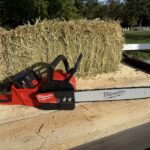
Milwaukee M18 FUEL
- Model: 2727-20
- Voltage: 18V
- Bar Length: 16”
- Chain Gauge: .043”
- Bare Tool Weight: 9.24 Lbs
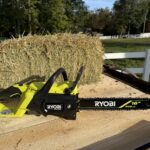
RYOBI
- Model: RY40HPCW02
- Voltage: 40V
- Bar Length: 16”
- Chain Gauge: .050”
- Bare Tool Weight: 8.24 Lbs
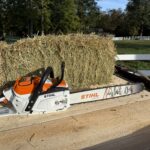
Stihl
- Model: MSA 300C-O
- Voltage: 36V
- Bar Length: 18”
- Chain Gauge: .050”
- Bare Tool Weight: 10.68 Lbs
Chainsaw Testing Categories
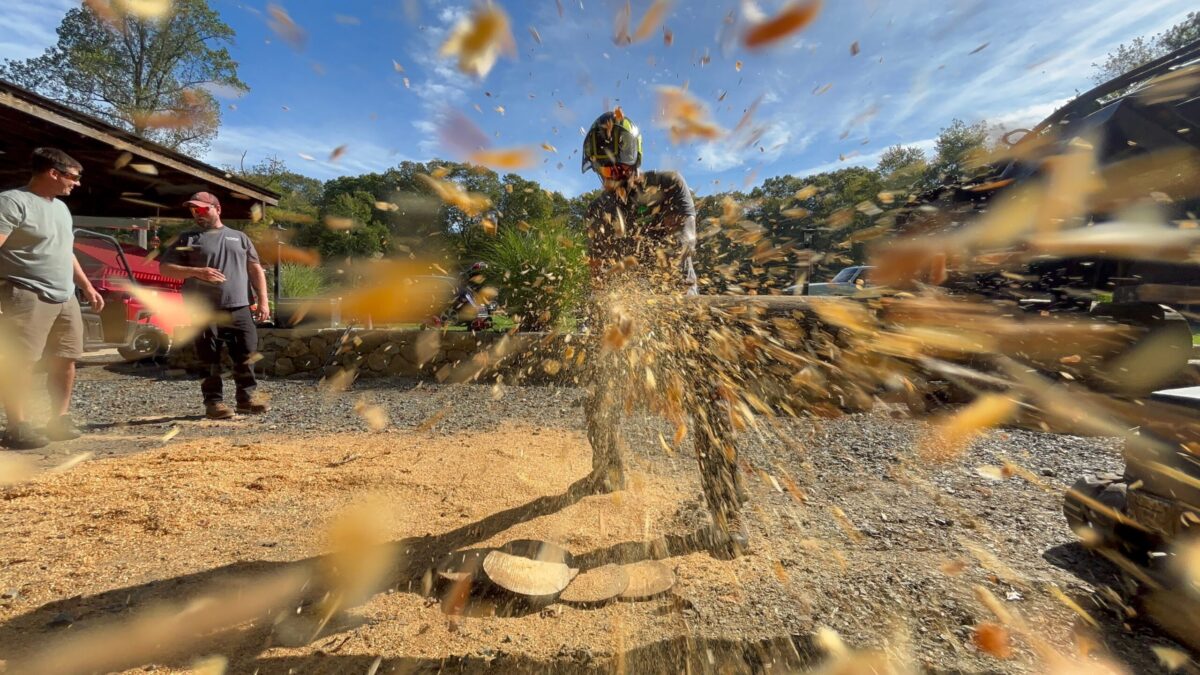
To evaluate each chainsaw fairly and comprehensively, we divided our testing into eight categories:
- Weight
- Noise Output
- Speed Cutting
- Runtime Crosscutting
- Board Milling | Torture test
- Features
- Ergonomics
- Price Best Overall Saw
- Best Value Saw
Chainsaw Testing Materials
One of the biggest challenges in testing a large group of chainsaws is maintaining consistency across test materials. Trees vary naturally in diameter, density, and straightness, and their bark often collects dirt and debris that can dull chains during use. To ensure fair and repeatable results, we removed all bark and milled our Oak test pieces into cants using crew member Marc Deslauries’ Hud-Son H360 Portable Hydraulic Sawmill.
Here is a link to the portable hydraulic sawmill we used for this Head-To-Head: Hud-Son H360 Portable Hydraulic Sawmill
A cant is a term used in the milling world to describe a log that has been cut and squared to a dimensional size. The log’s diameter determines the size of the cant, which can then be further milled into beams or lumber.
Our solid Oak cants were milled to the following sizes:
- 18” x 16” x 8’
- 16” x 16” x 8’
- 14” x 16” x 8’
These perfectly uniform, dense blocks of Oak provided consistent test material and pushed each saw to its absolute limit.
NOTE:
A sawmill, like the H360, is about the only tool on the planet that could create these test cants for us. If you are in the Northeast, you can contact Marc at Halcyon Hill Wood Products for more information.
Chainsaw Weight | Winner – Husqvarna 542i XP
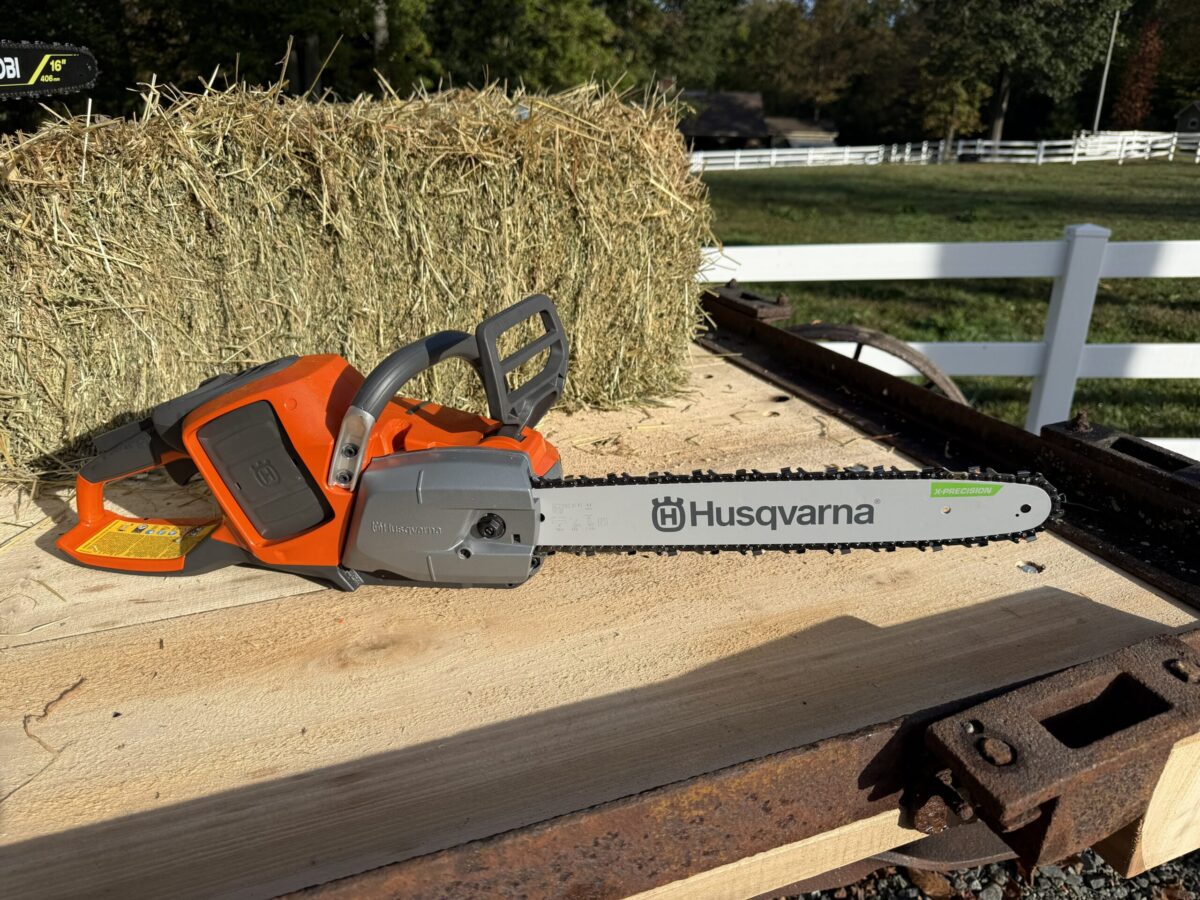
Weight is a major factor for both professional users and serious DIY enthusiasts. If a battery-powered saw is too heavy to handle comfortably, any advantage it offers over a lighter gas model quickly disappears.
We weighed each saw twice to capture both bare and working weights:
- We weighed the bare powerhead— with the bar and chain removed, no battery installed, and an empty chain oil reservoir.
- We weighed a fully assembled saw, filled the oil tank, inserted the battery, and recorded the final operational weight.
The Husqvarna 542i XP, a professional-grade saw, earned the top spot as the lightest saw in our lineup at 11.98 lbs fully assembled. It’s impressively nimble and comfortable for extended use. Interestingly, it also showed one of the smallest weight increases between bare and assembled states—only about 5 lbs—a testament to its efficient design.
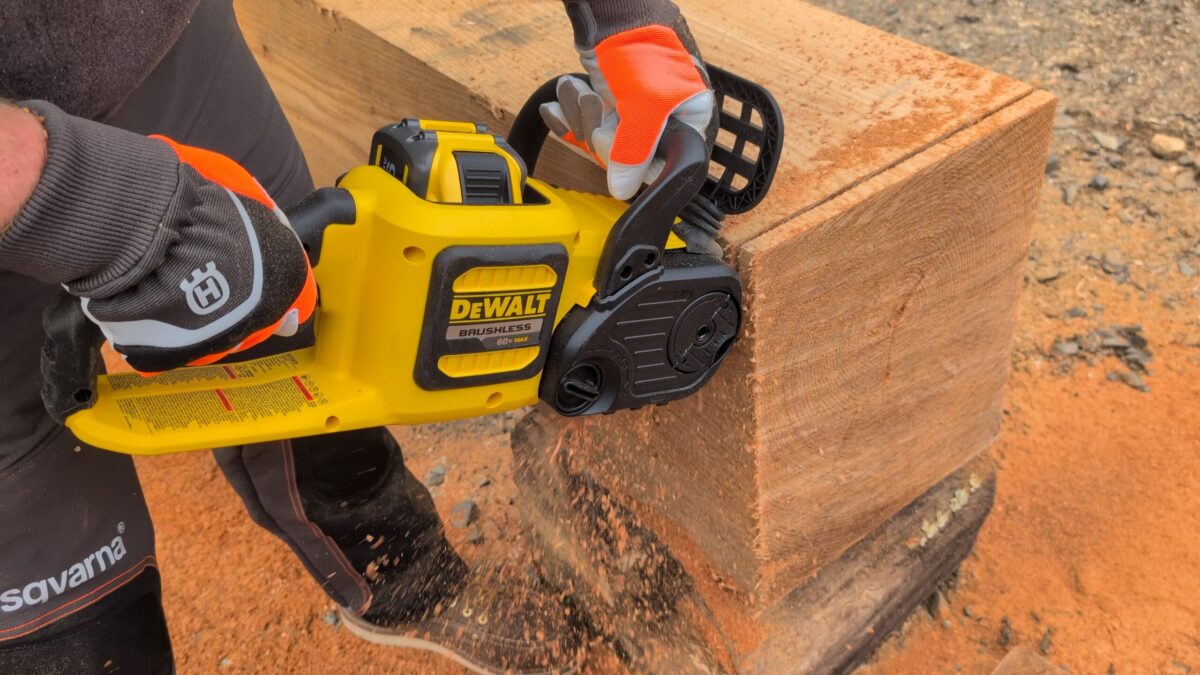
In second place was the DEWALT at 13.16 lbs, followed closely by the Kress at 13.18 lbs, making for an exceptionally tight finish. The Husqvarna 350i Power Axe, designed for homeowner and farm use, placed fourth at 14.04 lbs, while the Stihl came in as the heaviest at 17.34 lbs.
Chainsaw Noise Output | Winner – [Tie] RYOBI and DEWALT
Chainsaws aren’t known for being quiet, but battery-powered models generally produce less noise than gas saws. To evaluate each saw on its own merits, we tested them under no-load conditions.
Each saw was run for 30 seconds while we recorded the noise using a decibel meter. The peak reading was used to rank the saws.
The winner of this category was a tie between DEWALT and RYOBI at 88.7 decibels, followed closely by the Husqvarna 542i XP at 88.9 decibels. Milwaukee placed fourth at 89.1 decibels. The loudest saws were the Atlas at 98.2 decibels, and the Kress, which topped 100 decibels at 101.7.
Six of the ten saws tested fell below the OSHA threshold of 90 decibels for prolonged exposure during an eight-hour workday. Even so, we strongly recommend using the appropriate personal protective equipment whenever operating these tools.
Chainsaw Safety | PPE
Proper technique and personal protective equipment (PPE) are absolutely critical when operating a chainsaw. These powerful tools can cause serious injury if used incorrectly. According to the CDC, roughly 36,000 people are hospitalized each year due to chainsaw injuries, and these risks are present even with battery-powered models.
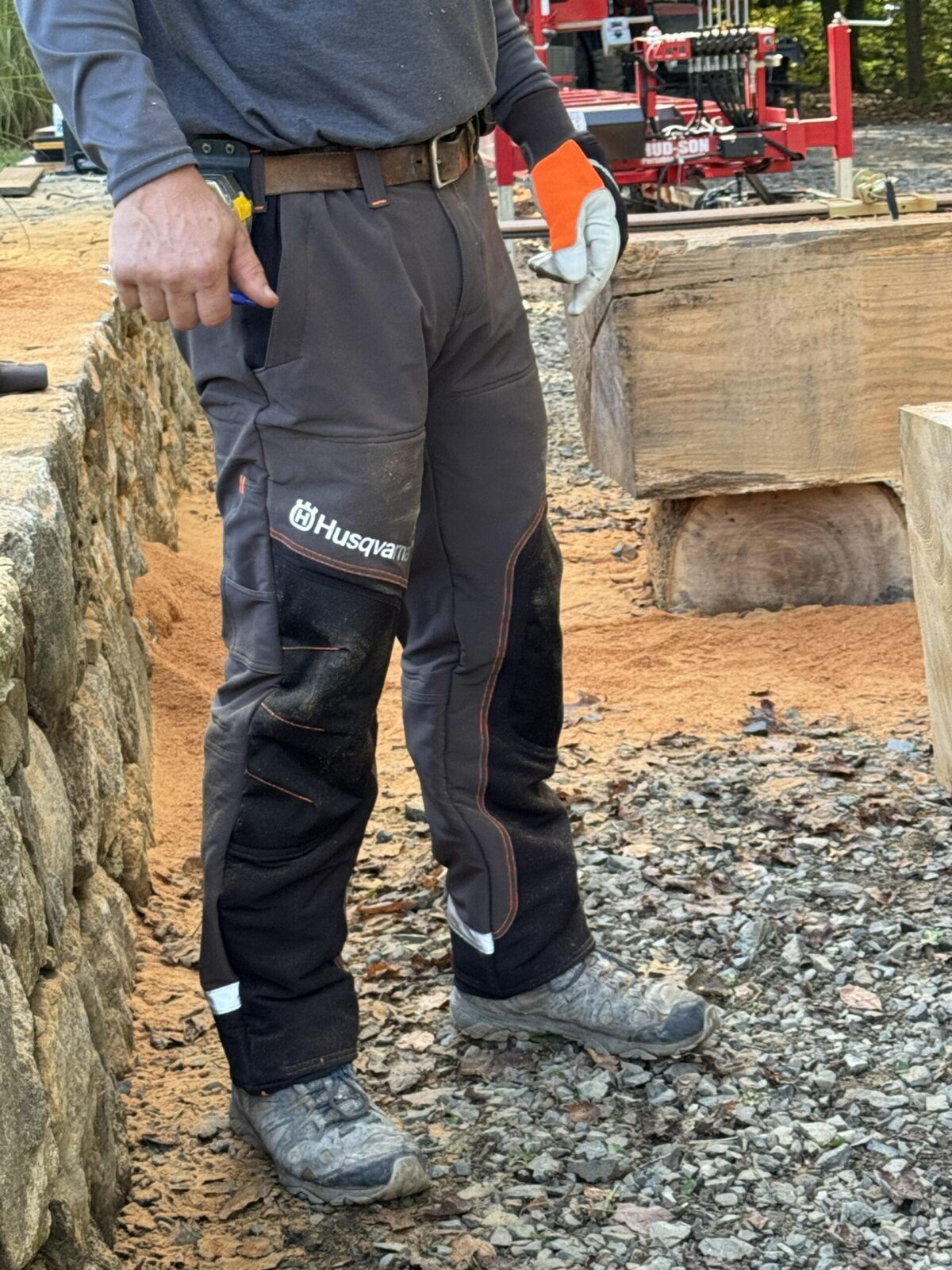
To ensure the safety of our crew, we worked with trained professional operators during testing. Husqvarna also partnered with us to provide safety PPE for all saw operators. Mandatory testing gear included a chainsaw helmet, safety glasses, chainsaw-rated gloves, and Technical Chainsaw Pants. The pants performed exceptionally well, moving comfortably with our operators throughout the day, unlike traditional safety chaps.
Link to Husqvarna Chainsaw Pants: Technical Chainsaw Pants
Chainsaw Speed Cutting | Winner – KRESS
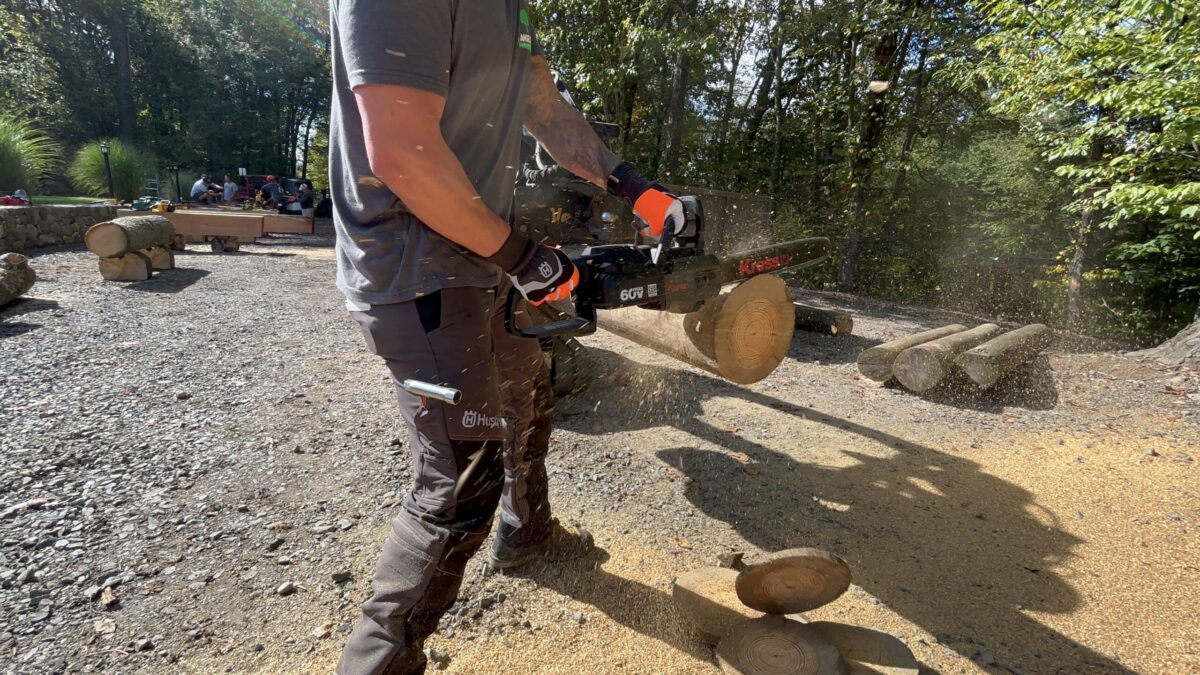
For our speed cut testing, we selected treated pine utility poles. These are widely available, clean, and mostly uniform in size. We matched poles as closely as possible and flipped pieces as needed to maintain consistent diameters. Battery-powered chainsaws are often used by linemen and other utility professionals in the field, so this setup provides a practical and relevant benchmark for those users.
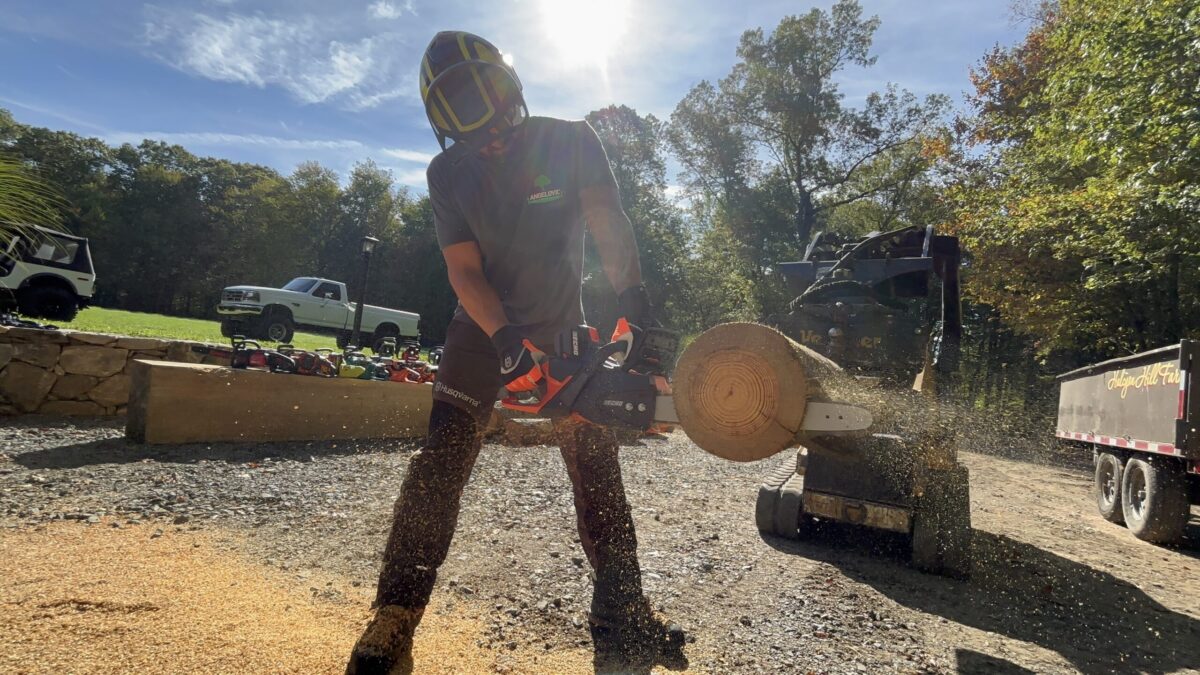
The poles were held off the ground at waist height by a mini skid-steer machine. We performed three cuts (down, up, down), and the test was repeated three times to calculate an average time for the final score. The poles measured approximately 10 ¾” in diameter, varying by about ¼” depending on the piece selected.
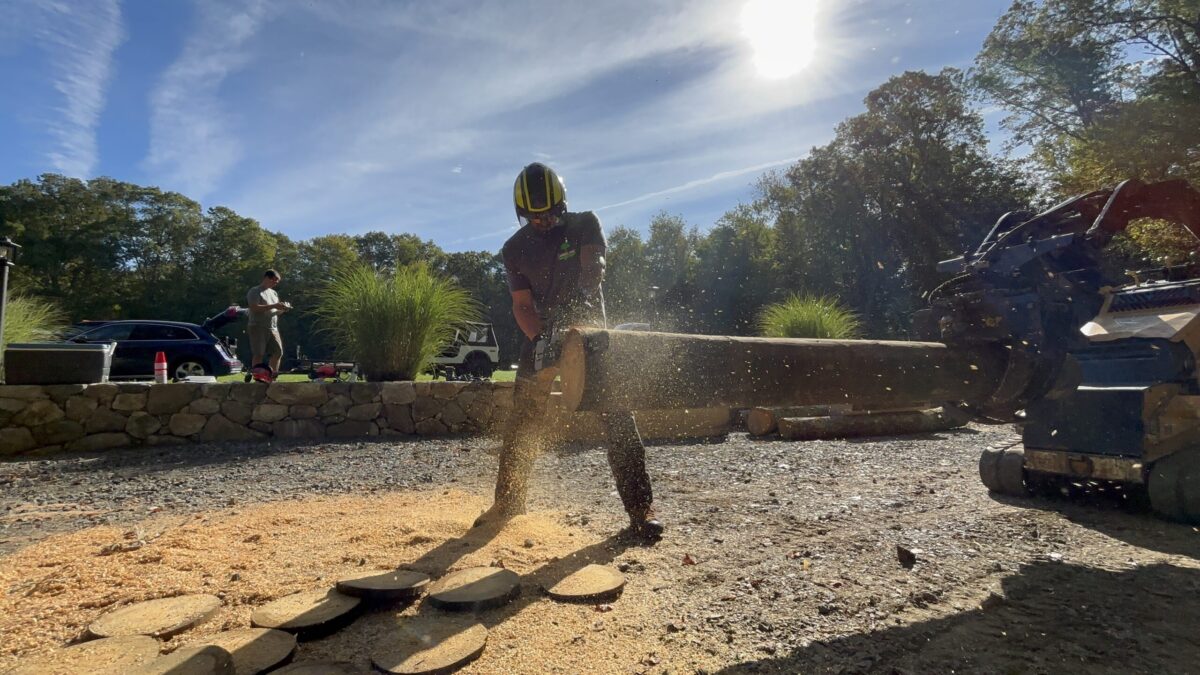
The fastest saw in this test was the Kress, averaging 15.12 seconds—a full seven seconds faster than second-place Stihl at 22.21 seconds. Atlas, the Harbor Freight brand, earned third place at 32.64 seconds, followed closely by Milwaukee at 33.48 seconds. The slowest saw was the Makita XGT, clocking in at 55.02 seconds.
Cross-Cut Runtime Test | Winner Milwaukee
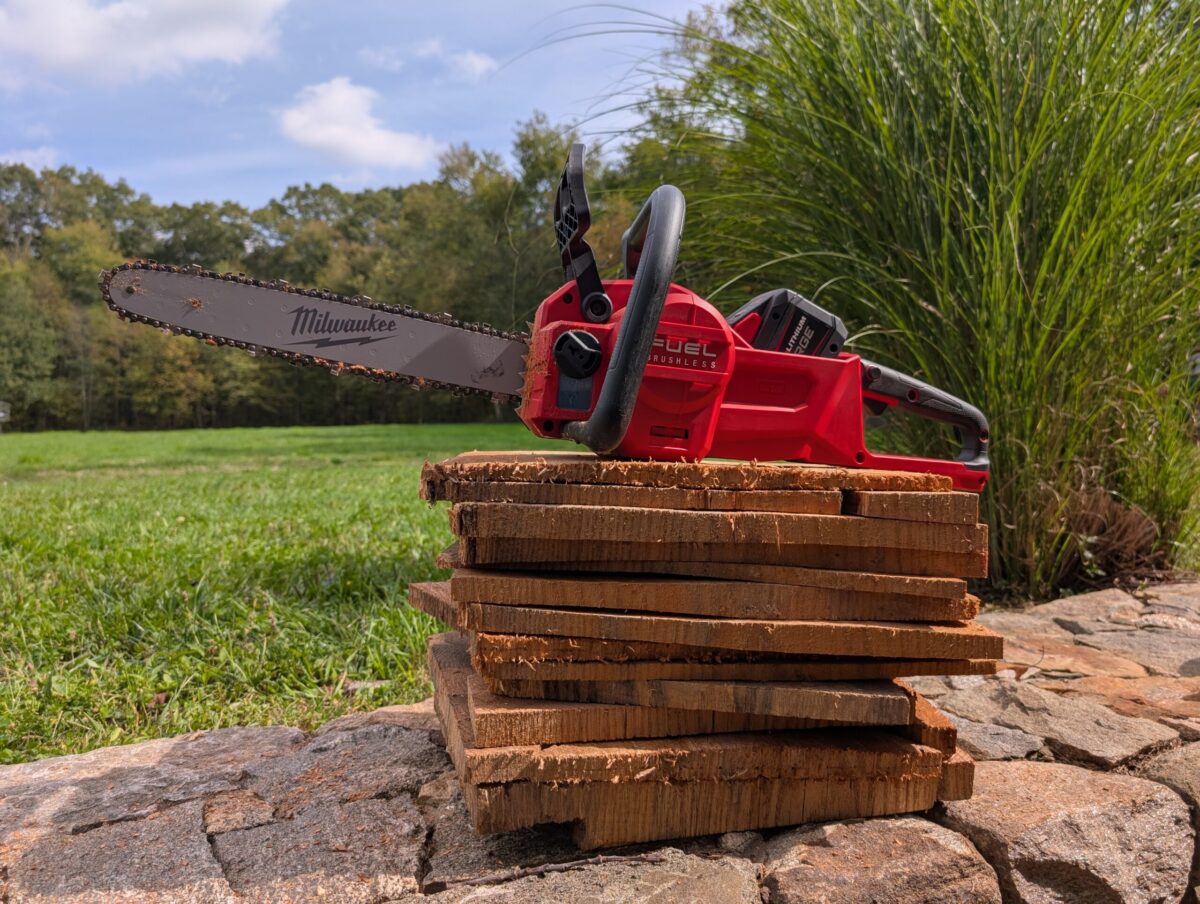
The second performance test tasked each saw with performing as many cross-cuts as possible on a single battery charge. This is often called a “cookie” cutting test. Since our Oak test beams were squared rather than round, “wafer” cutting might be a more confectionery-accurate description.
The maximum cutting depth on all of our saws is roughly two inches shorter than the bar length due to the felling spikes (dogs) at the front of the saw. To account for this, we milled beams two inches shorter than each saw’s bar length. This ensured that whether the saw had a 16” or 18” bar, it was cutting about 90% of its maximum capacity.
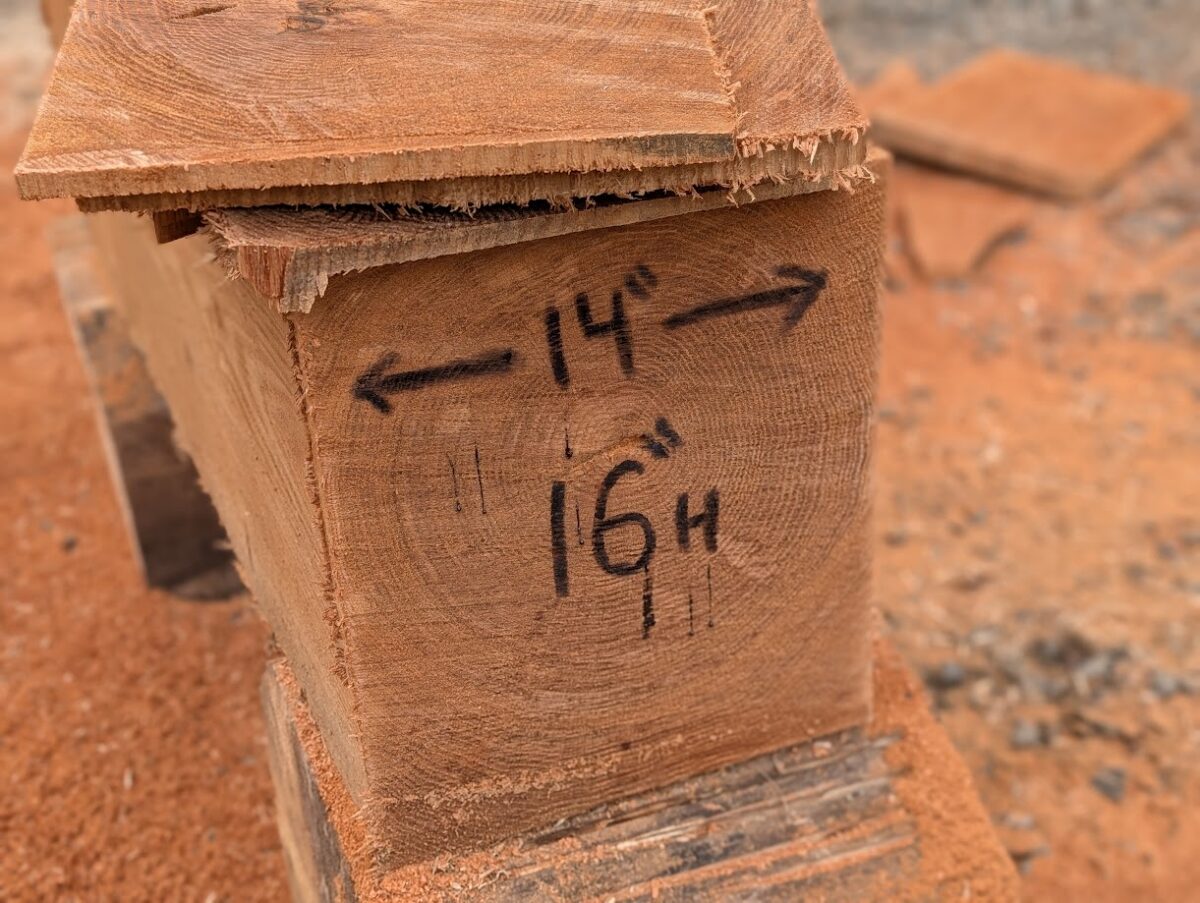
To prevent thermal overload during this demanding test, our operators alternated two saws: each saw made two cuts, then was set aside while another saw was used on the opposite side of the beam. This rotation kept the saws from overheating and maintained consistent testing conditions.
The saws performed consecutive “cookie cuts” in a test log until battery depletion. We recorded the total number of full cuts and measured any partial cuts for overall runtime performance.
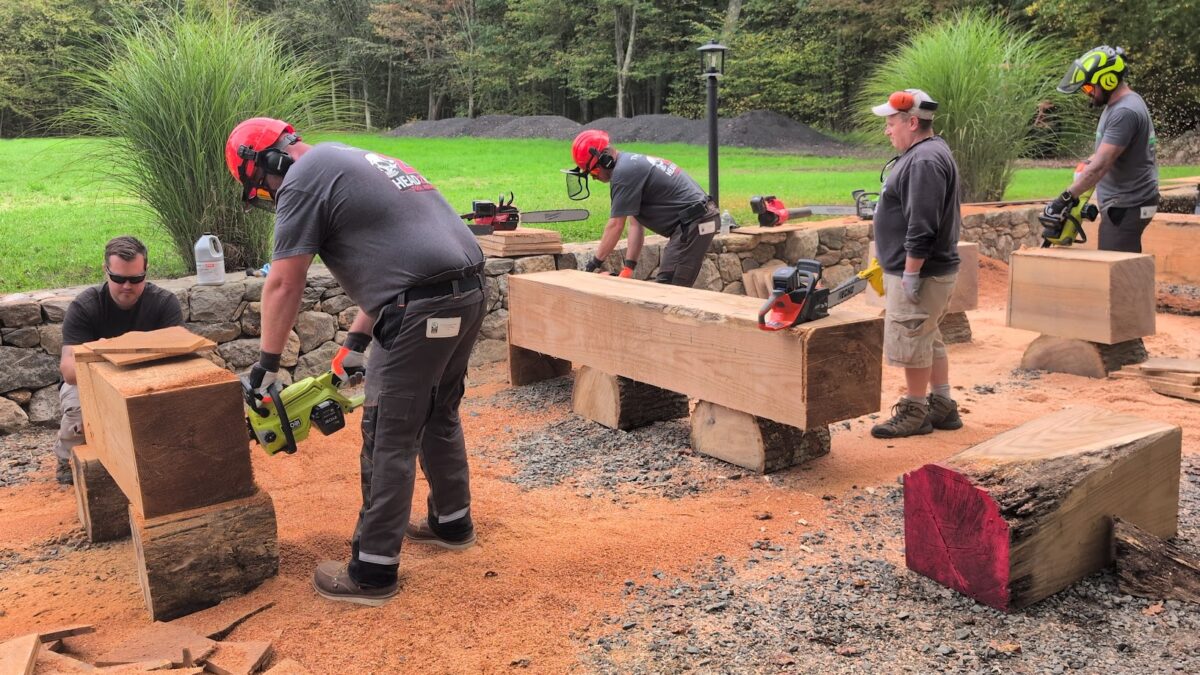
Our winner in this test was Milwaukee with 13 full cuts and a partial depth of 3”. Second place went to the Husqvarna pro saw, model 542i XP, with 11 full depth cuts and a partial depth of 5”. Atlas brought home the bronze again with 10 full-depth cuts and a partial depth of 5”. RYOBI narrowly missed Atlas with 10 full-depth cuts and a 3” partial depth. Our bottom two performers in this category were STIHL with 5 plus 9” and Makita XGT with 3 plus 10”.
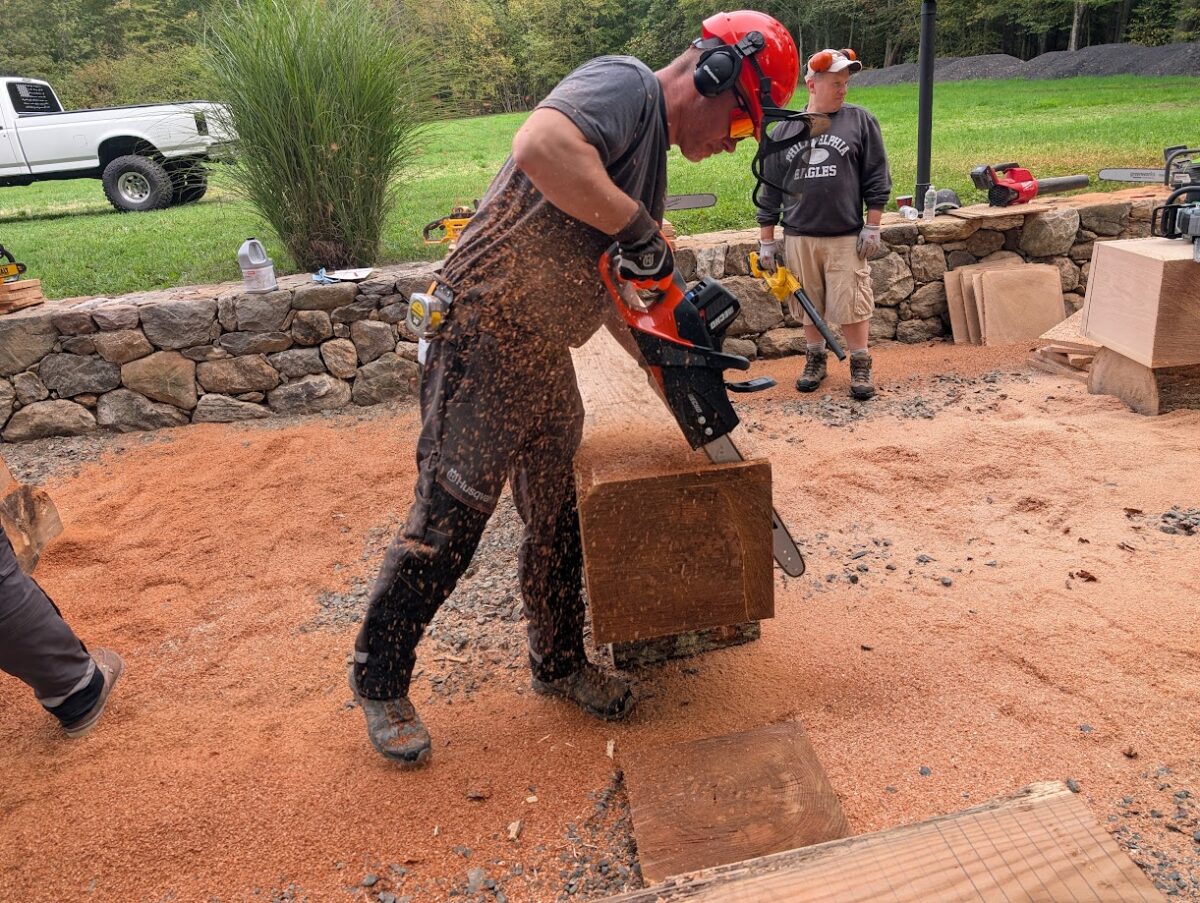
Milling Torture Test | Winner Husqvarna Power Axe 350i
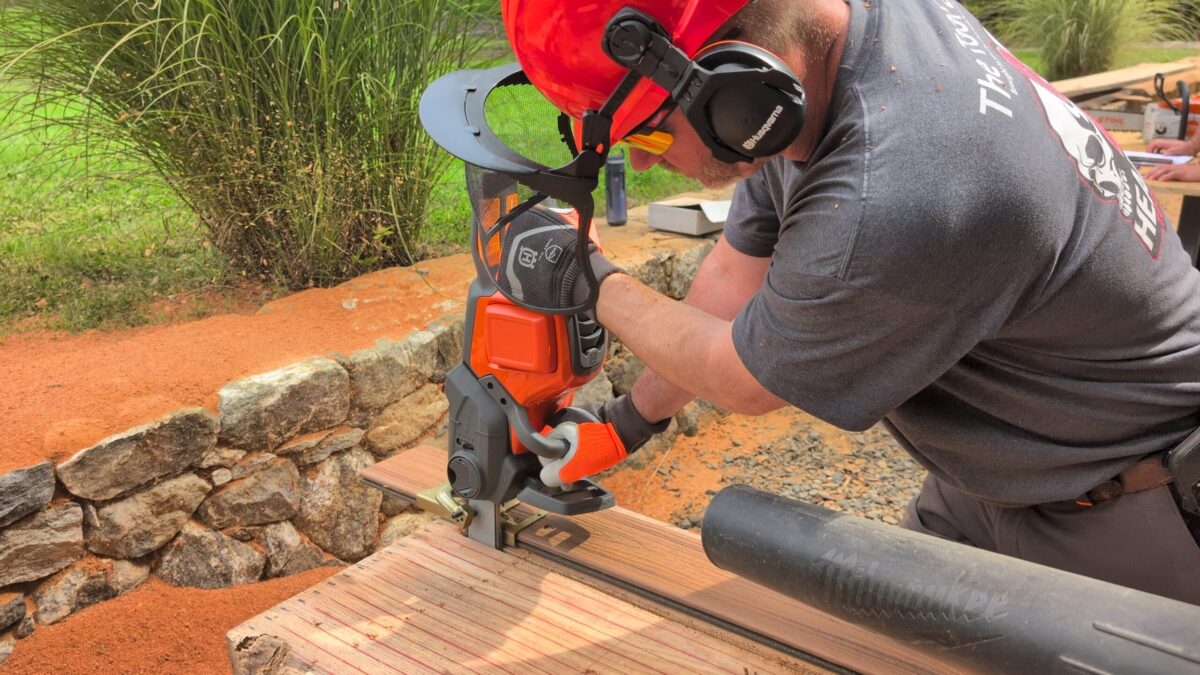
Chainsaws are a go-to tool for homesteaders and individuals in remote areas for milling their own lumber. To test the battery saws’ abilities in this role, we set up a lumber-milling scenario—spoiler alert, the Hud-Son excels at this!
We used a vintage Haddon Lumbermaker milling guide for the test. The guide was mounted on a piece of composite decking attached to a massive oak cant. Each saw was then mounted in the guide, which allows the bar to pivot freely into a vertical position and run through the log until the battery is fully drained. For most saws, this became a true torture test.
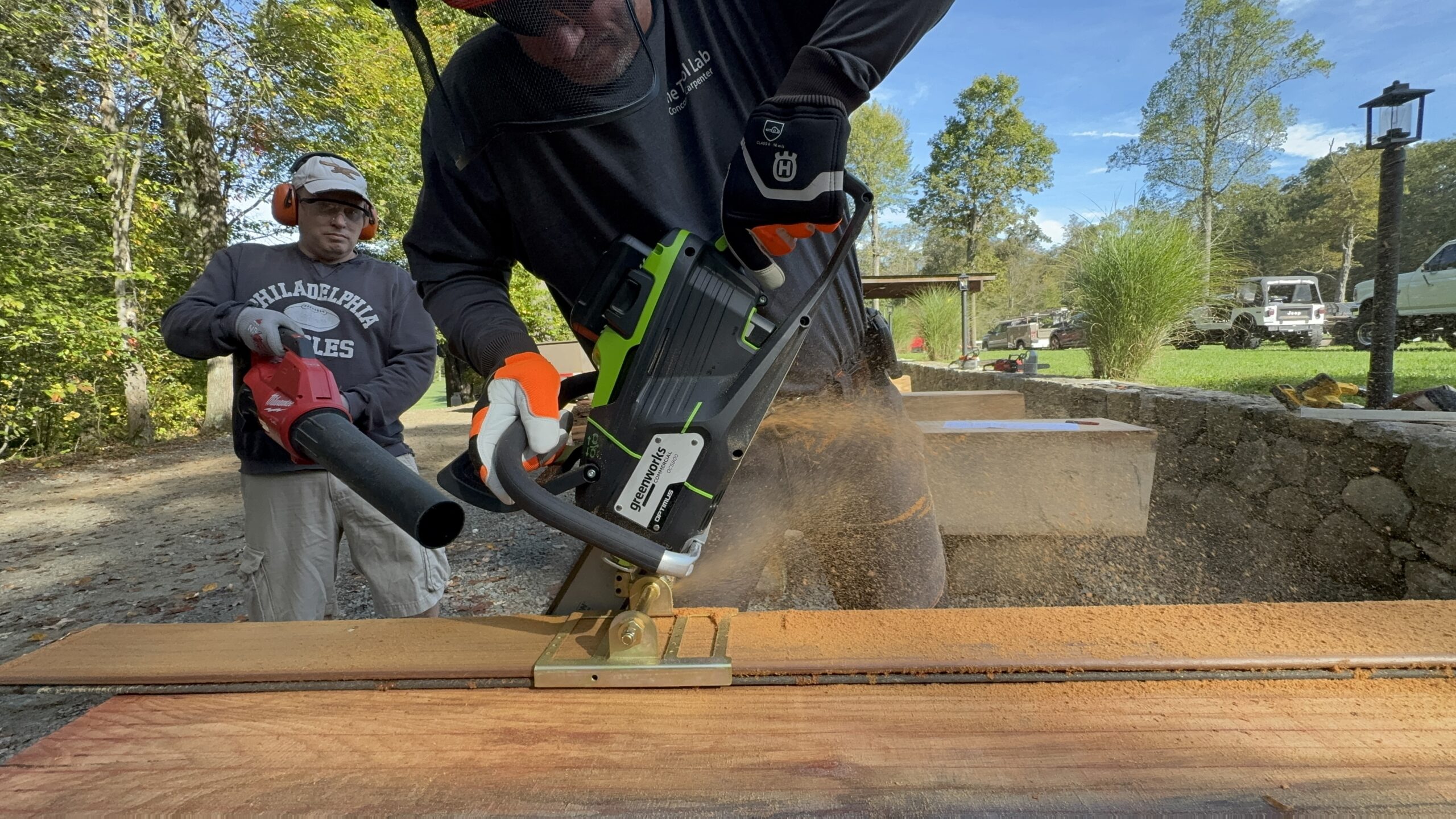
Or as we called it …The Great Oak Gauntlet!
The standout performer was the only saw to complete a full-length 87” cut without bogging down: the Husqvarna Power Axe 350i. Pulling an 18” bar and chain through the log in 6:18, it impressed the crew with a total cutting depth of 14”—one of the deepest in our test.
Because cutting depths varied due to mounting positions, bar lengths, voltage, and battery capacity, raw performance data weren’t directly comparable. To normalize results, we calculated inches cut per watt-hour for each saw using total watt-hours, cut depth, and cut length.
We recorded either:
- The total distance cut on a single battery charge, or
- The time required for any saw that completed a full-length cut.
This data was used to calculate cut-per-watt-hour efficiency, providing insight into each saw’s power management.
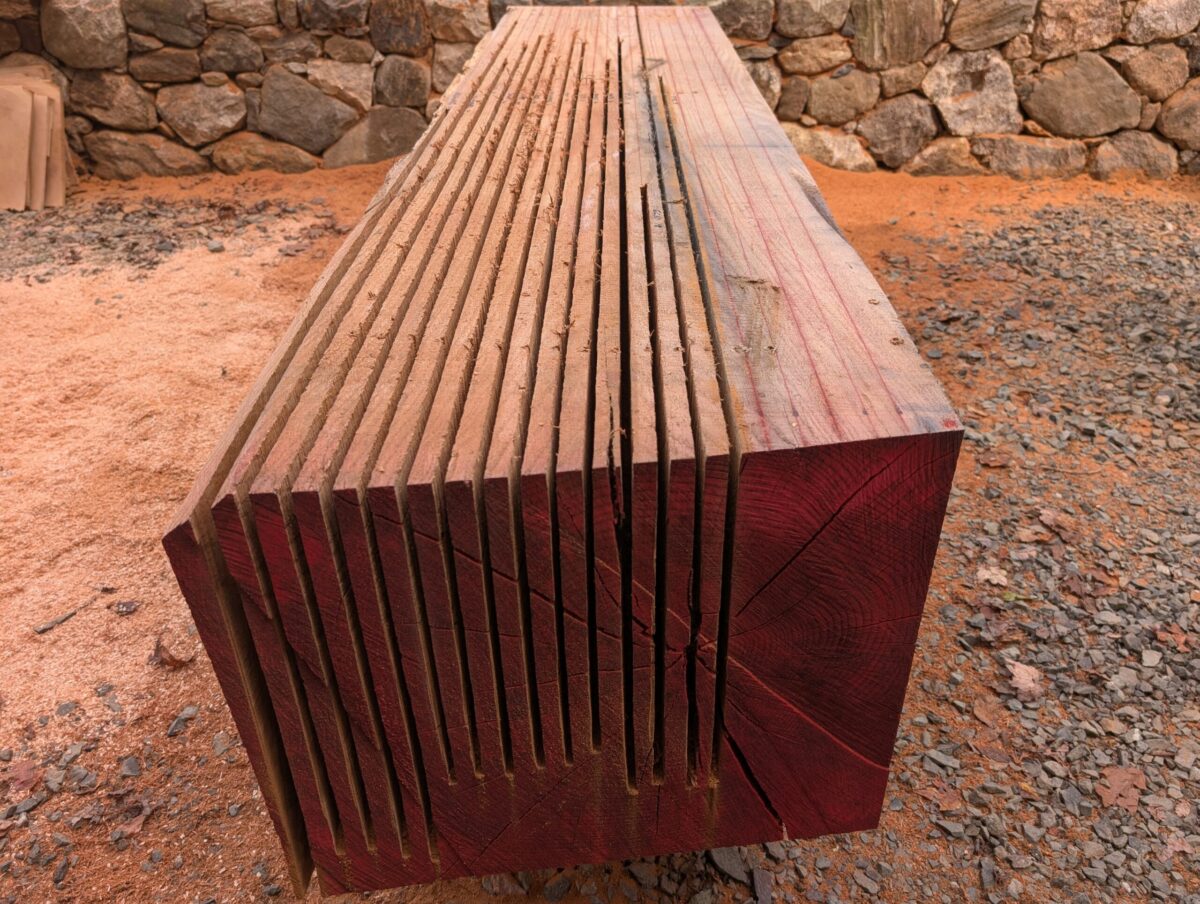
The results were:
- Husqvarna Power Axe 350i – 5.0 Inch/WH (winner)
- Milwaukee M18 FUEL – 4.64 Inch/WH (second)
- Kress – 3.5 Inch/WH (third)
- DEWALT– 3.2 Inch/WH (tied fourth)
- RYOBI – 3.2 Inch/WH (tied fourth)
- Makita XGT – 1.95 Inch/WH (bottom)
- Echo – 1.51 Inch/WH (bottom)
This test was very demanding and pushed the saws to their limits. Many of the saws, such as the Echo, shut down multiple times during the milling portion and had to be reset.
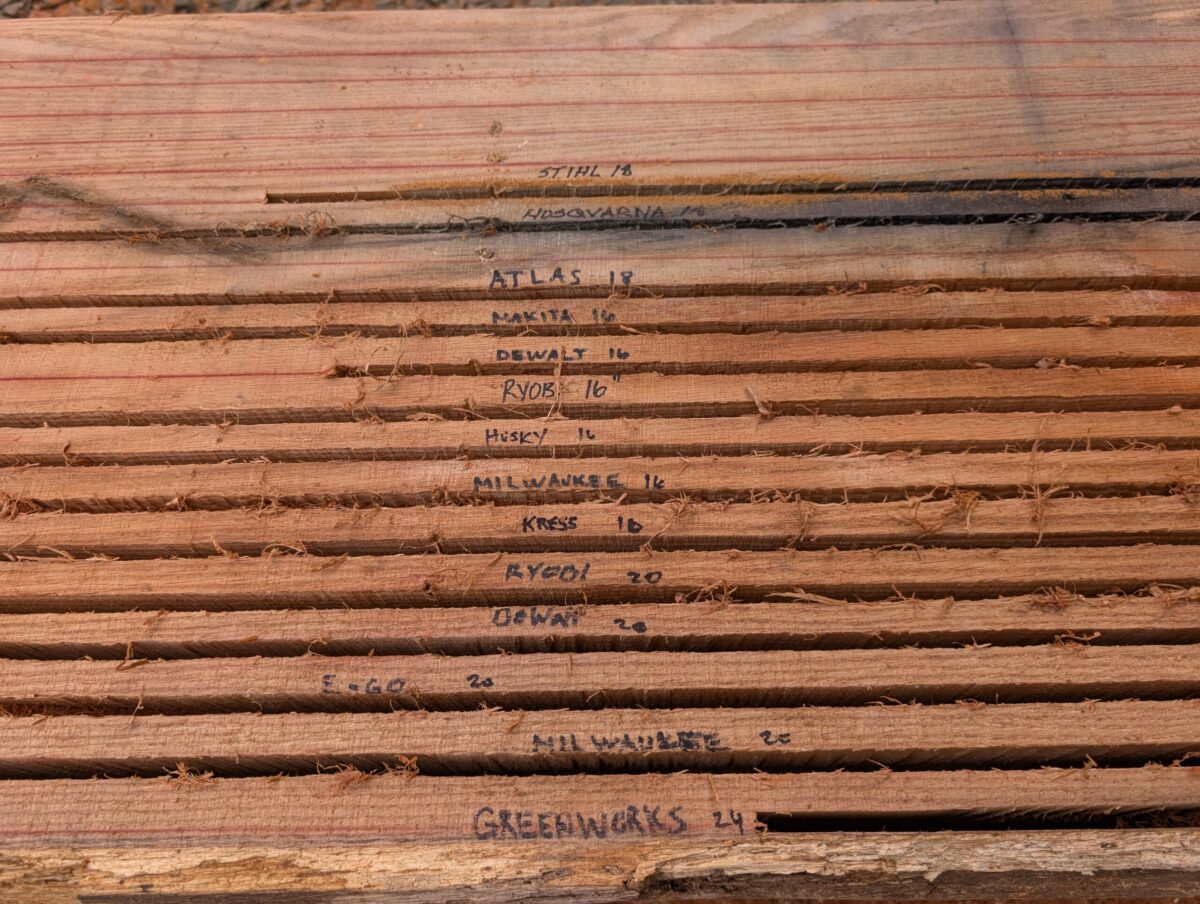
Chainsaw Features | Winner: Stihl
Features are important on any tool, but poorly executed ones can create a frustrating user experience. For this test, we focused on practicality:
- Is the chain tension easy to adjust, and does it hold once set?
- Do the felling spikes (dogs) effectively grip the wood?
- Is the bar and chain oil tank easily accessible?
We assessed five feature subcategories
- Design
- Adjustability
- Safety
- Innovation
- Features
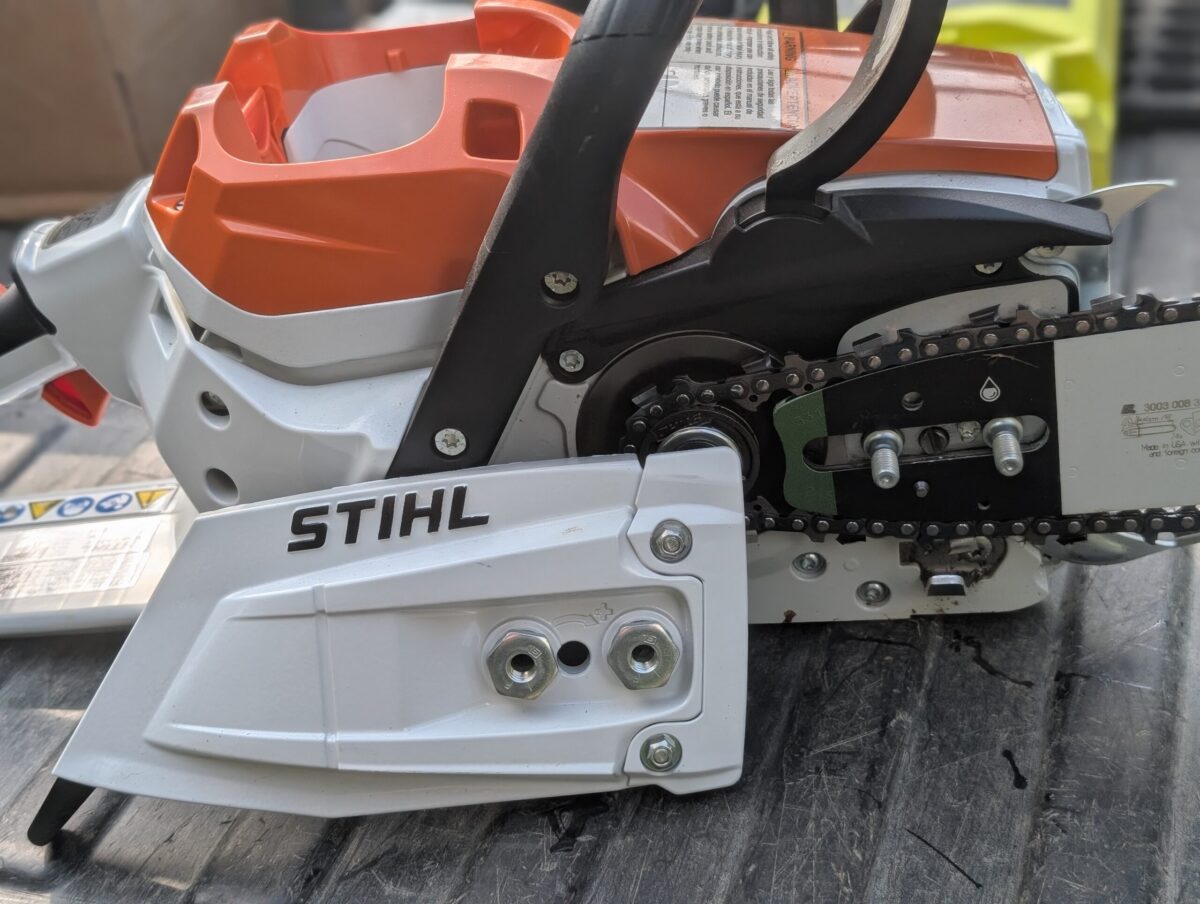
Our crew also agreed that extra speed modes aren’t a major selling point on a chainsaw, though a few saws executed them flawlessly.
The winner in the features category was Stihl. The saw feels like an almost exact replacement for a gas chainsaw. It has aggressive felling spikes and a robust, tooled chain tension system—which our team prefers over hand-crank systems for durability. The Stihl bar oil caps are easy to access even while wearing gloves.
The Stihl offers three modes: an eco mode for battery conservation, a high setting compatible with all Stihl AP series batteries, and a turbo mode that requires the AP500S, Stihl’s largest battery.
A standout feature is Stihl’s electronic oil monitoring system. A projected laser inside the bar oil tank tracks oil flow, triggering a red alert light on the control screen if the level is low or contaminated with debris. This ensures proper lubrication, preventing expensive bar damage. The oiler system is also manually adjustable for flow based on temperature, wood species, and cutting conditions.
Second place went to the Husqvarna pro model, 542i XP. While it lacks some of Stihl’s advanced features, it still offers eco mode, aggressive felling spikes, an adjustable oiler, and an excellent battery level gauge. Third place went to the Husqvarna Power Axe, which lost points to its pro model sibling due to a clumsier, hand-crank chain-tensioning system.
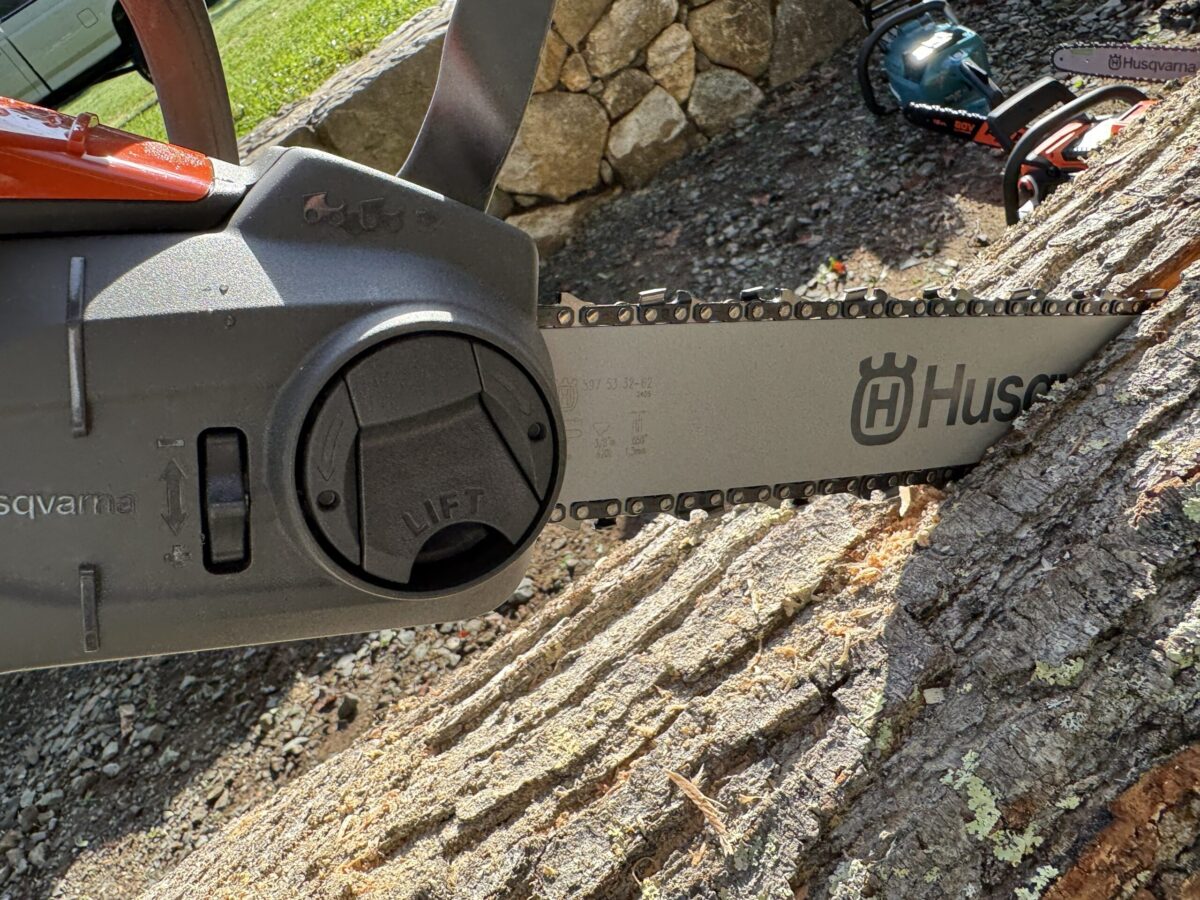
The bottom performers were Atlas, RYOBI, and DEWALT . While these saws include an onboard saw wrench, they offer few additional features compared to the competition.
Chainsaw Ergonomics | Winner – [Tie] Stihl and the Husqvarna Power Axe
At the conclusion of our testing day, our crew gathered all the saws to evaluate six key areas of ergonomics. Each category was assigned a point value, and a total score was calculated based on these points.
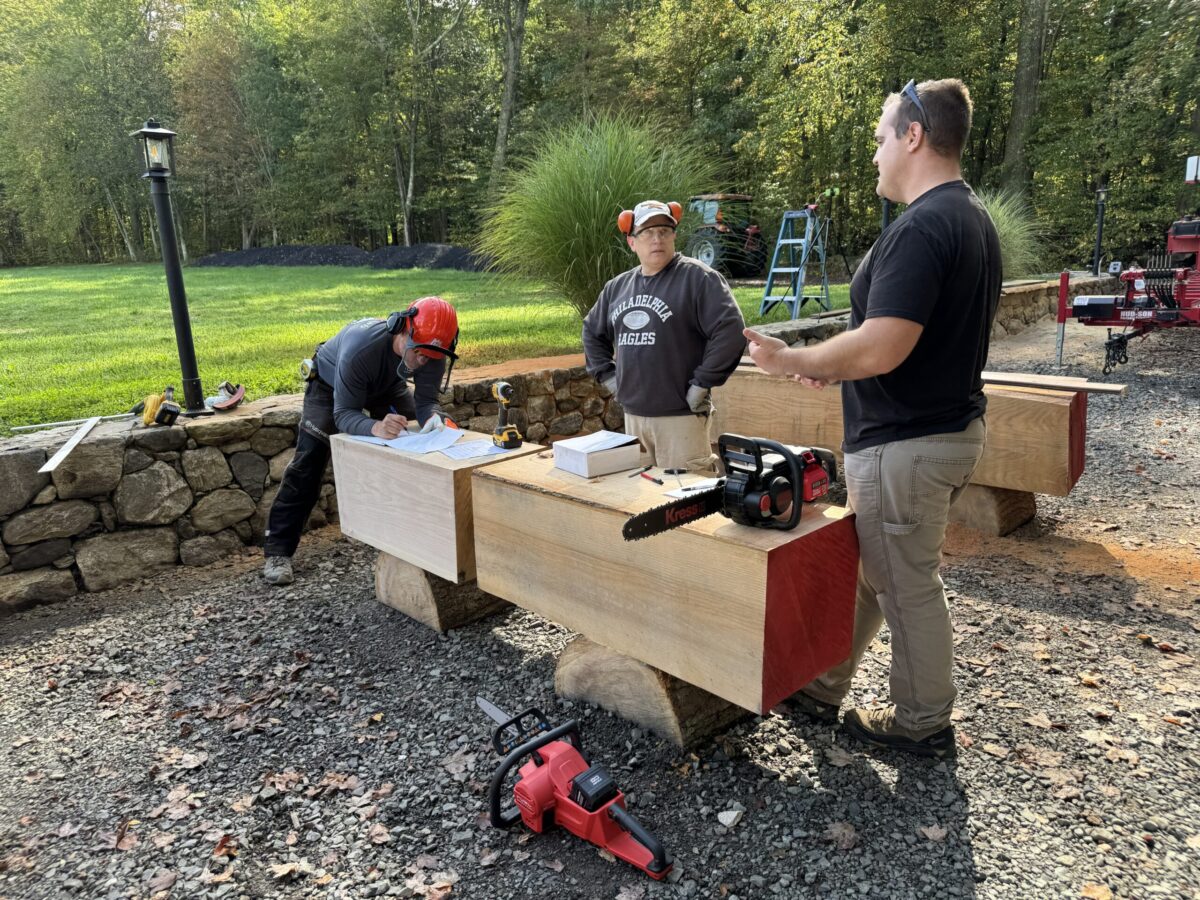
Chainsaw Ergonomic Assessed:
- Grip Contour
- Grip Texture
- Forward Handle Design and Placement
- Ease of Battery Change
- Control Locations
- Overall Weight Distribution
- Balance
First place was a tie between Stihl and the Husqvarna Power Axe. Both saws are thoughtfully designed and executed.
Stihl places all controls within easy reach while maintaining a secure grip, offers lightning-fast battery changes, and provides a comfortable handle. The only drawback is the front handlebar is plastic; we would prefer a metal option.
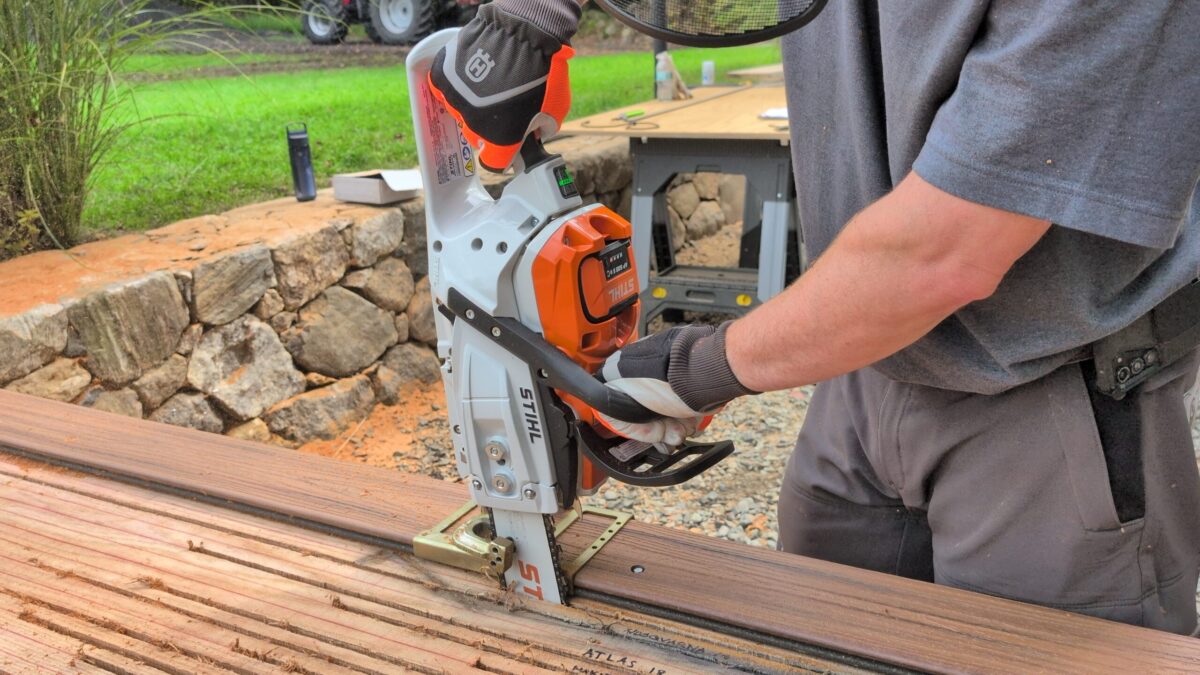
The Power Axe features a unique sliding tang safety on the rear of the grip that activates as you set your hand—this was a crew favorite.
The Husqvarna pro model followed closely. It delivers a complete package in a lightweight, balanced, and extremely comfortable saw. The front handlebar angle and metal construction stood out to our team. The Makita XGT also performed well, with simple, easy-to-reach controls.
DEWALT struggled in this category due to an oversized grip, a flat safety release lever that felt awkward, and a cramped front handle.
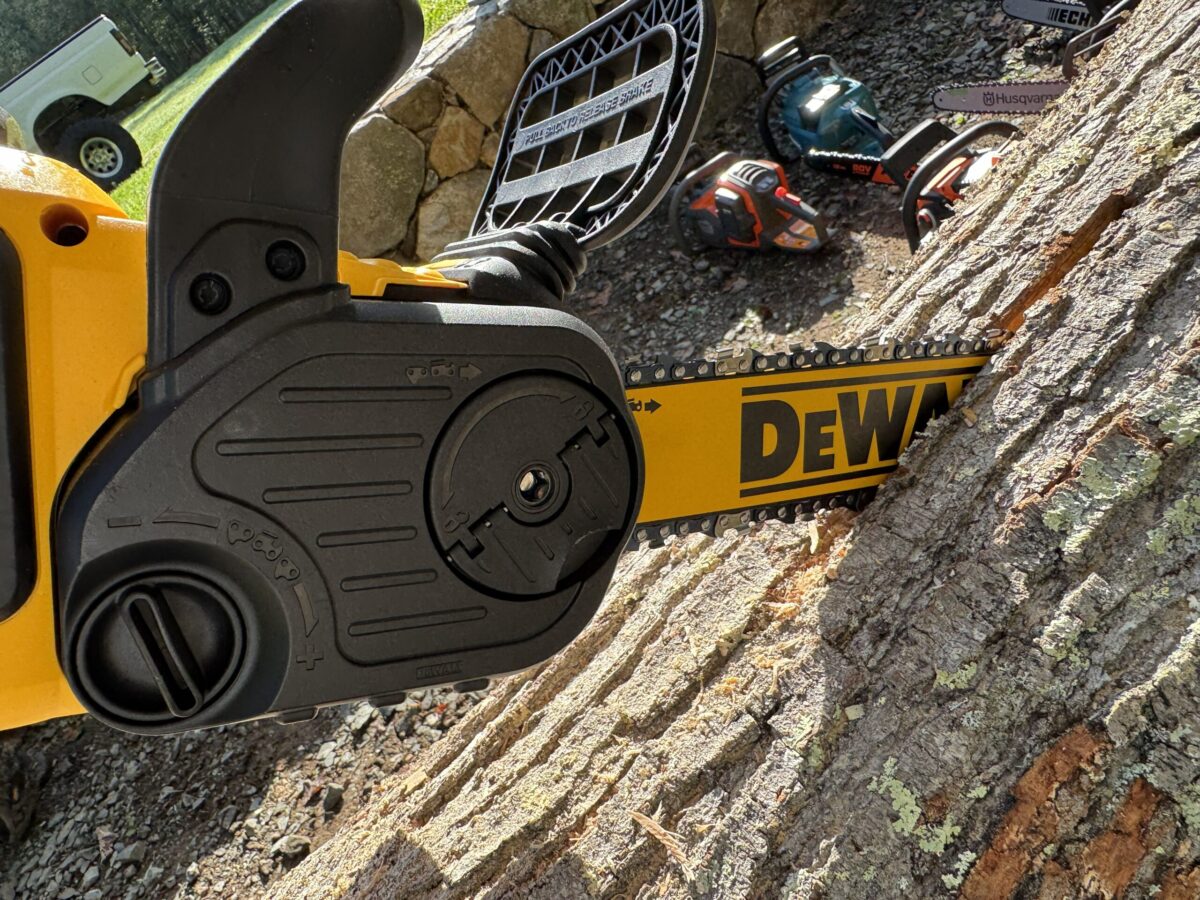
Milwaukee ranked lowest in ergonomics. While a strong performer overall, its front handlebars were excessively wide, resembling a beachcomber bicycle, and the elongated saw body made it rear-heavy. This design required more effort from the user to maintain balance during operation.
Chainsaw Price | Winner – Atlas
While not included in our overall rank structure, price is an important category for many users. We priced our tools as accurately as possible for a bare tool price. Some offerings are not available as a bare tool, and therefore, this hurts them in the price category.
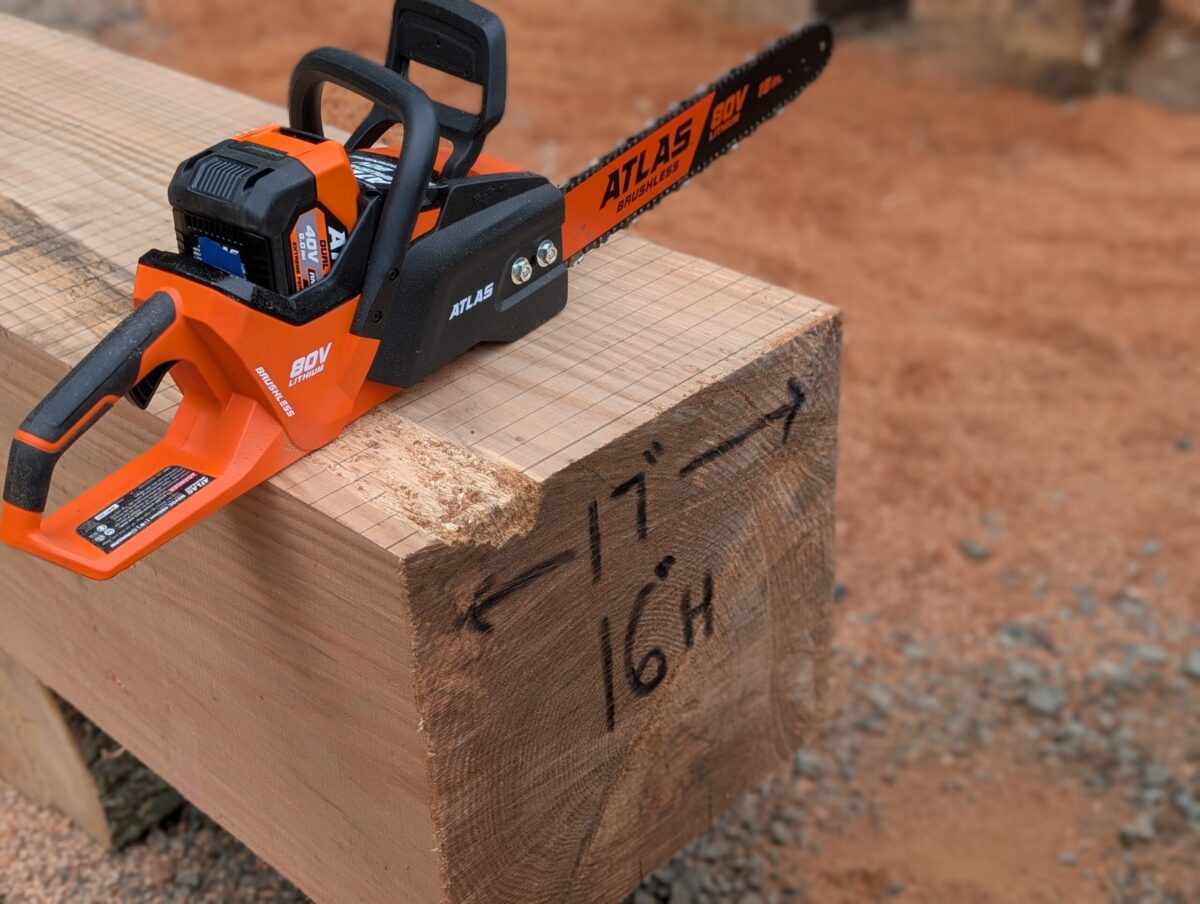
The Atlas saw is available for $149.99 from Harbor Freight and is our most affordable tool. In second place, we have RYOBI at $199.00 from Home Depot. Third place goes to Echo at $249.99 from retailers such as ACME Tools or other Echo power equipment dealers. Fourth place went to Milwaukee at $279.00 for a bare tool.
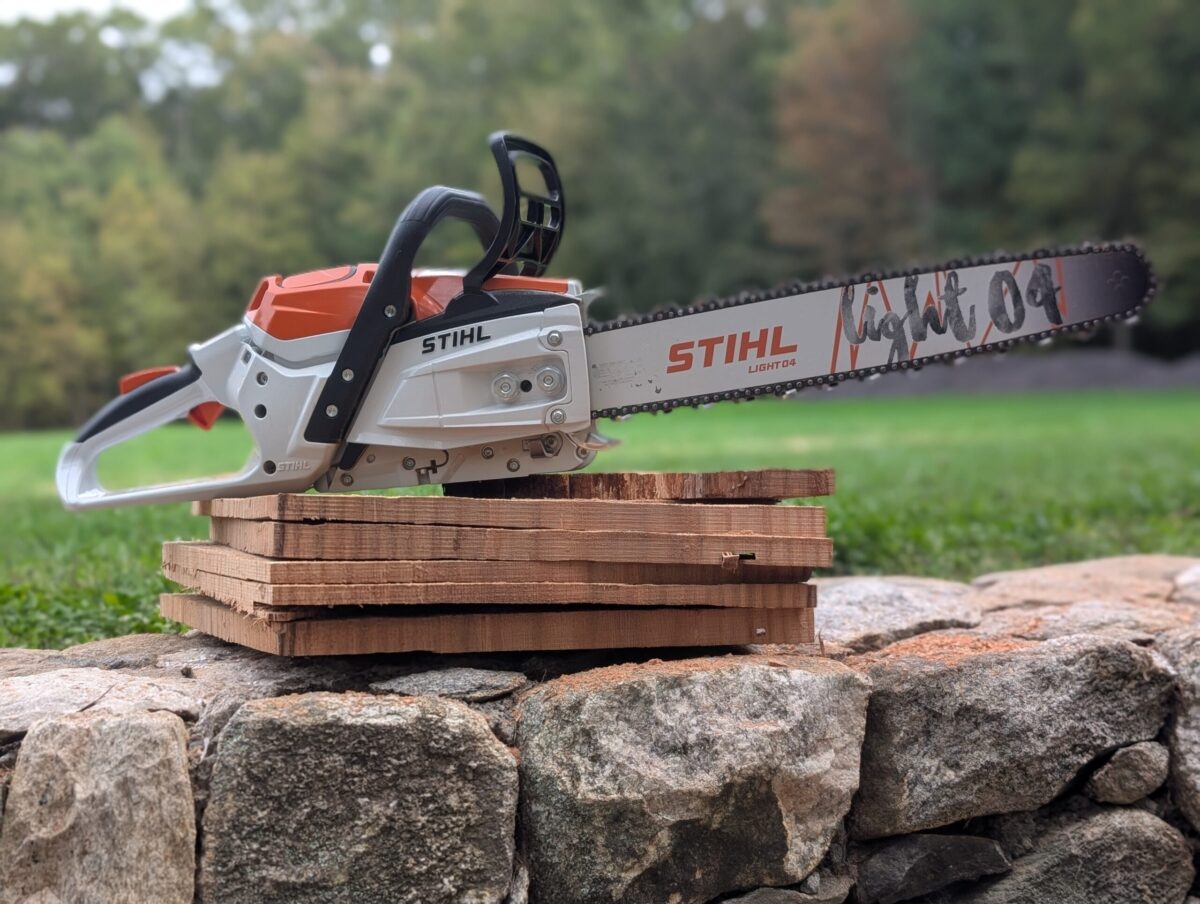
Our most expensive tools tested were the Husqvarna 542i XP at $719.99 and the STIHL at $859.99. While these prices may seem high compared to some of the other saws we tested, there’s a reason for the premium. Both are professional-grade models built for daily use, and they can be serviced and repaired at dealerships as needed. That durability and higher build quality come at a cost, but they ensure longevity and reliable performance over time.
Best Battery Chainsaw: 16″–18″ Bar Range | Winner – [Tie] Husqvarna 542i XP and Milwaukee
Our top pick in the 16″–18″ bar range ended in a tie, with both the Husqvarna 542i XP 16” and the Milwaukee 16″ earning an overall score of 35 points.
The Husqvarna 542i XP stood out in our testing thanks to its impressive performance. It delivered excellent results in crosscutting during our oak wafer cutting runtime test. Its lightweight build, ergonomic design, and robust feature set helped it secure a top spot in our rankings. That said, you can’t lean on this saw too hard or it will stall—you need to let the saw do the work. One standout feature was the lightning-fast trigger reset after a stall, which we particularly noted during our milling test.
The Milwaukee M18 FUEL 16” chainsaw performed extremely well in our testing. It closely resembles the model we tested five years ago in our original Head-to-Head, and that familiarity is both a strength and a weakness. While the saw remains simple, reliable, and effective, it would benefit from a refreshed design—particularly a slimmer front handlebar and a more compact body. As it stands, the saw feels disproportionately long for a 16″ bar and chain. It doesn’t fit well in a truck utility tool box.
Another area for improvement is the lack of a battery fuel gauge; a feature Milwaukee includes on other tools like their backpack blowers. Adding this would enhance the overall user experience.
Despite these drawbacks, the M18 FUEL earned high praise from our pro users. It was one of the few saws they said they’d make room for in the on their trucks—a strong endorsement of its work-ready simplicity. It’s a dependable, no-frills tool that gets the job done, but with a few refinements, it could be even better.
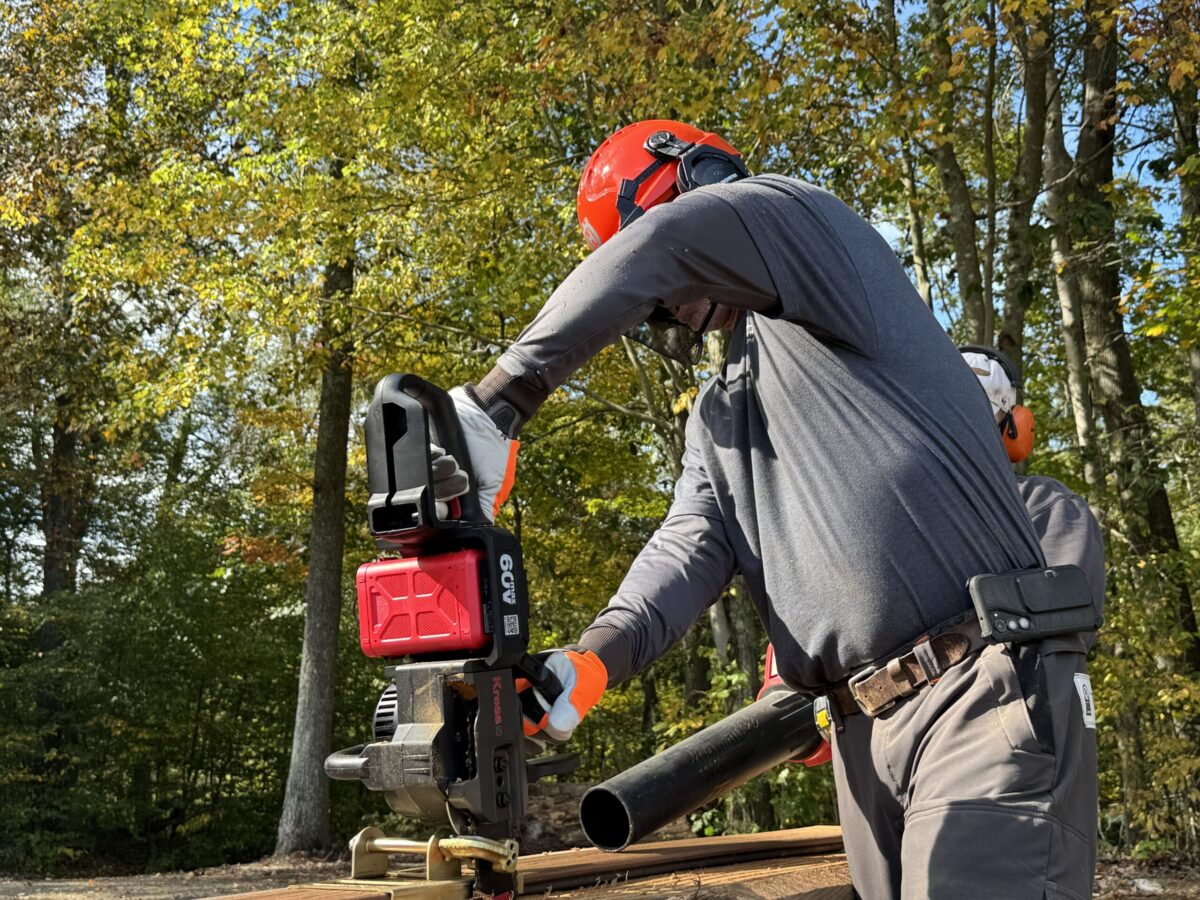
Third place was the Kress, a newcomer to the U.S. market. Their rapid-charging CyberTank system allows a full charge in as little as twelve minutes. Combined with lightning-fast cut speeds, this saw is a solid choice for demanding pros. We’ve covered the cyber tank and Kress product and their worth a look for sure!
Fourth was the Husqvarna 350i Power Axe, which trades some of the refinement of its pro-grade sibling for raw power. Designed with farmers and heavy-use homeowners in mind, it’s an excellent option for property maintenance or firewood cutting, and our testing showed it’s capable of handling some pro-grade work as well.
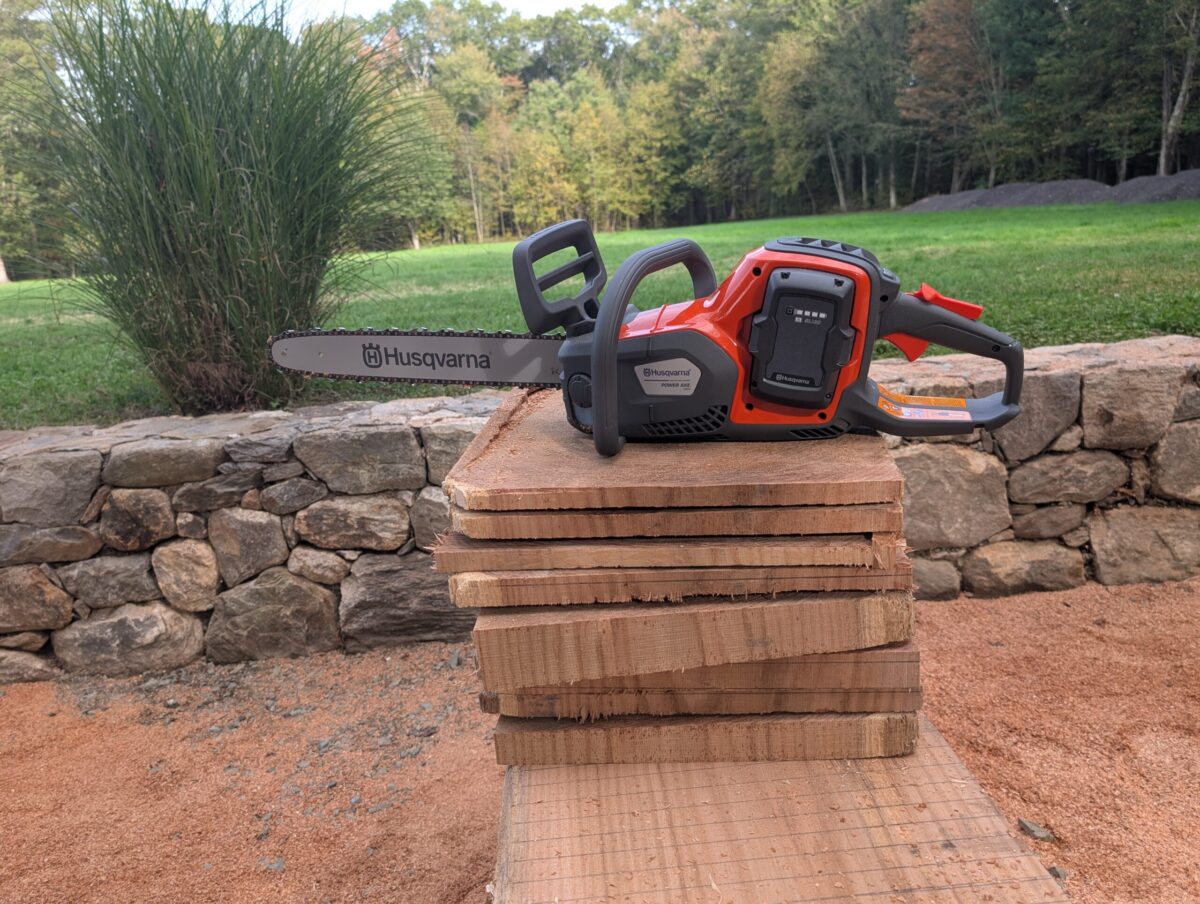
The Husqvarna Power Axe wasn’t originally on our radar. Husqvarna sent it to us for testing, and we weren’t quite sure what to expect—but it quickly became a crew favorite.
What set it apart was its raw cutting power. It was the only saw in the lineup able to perform a full pull through a solid oak log during our milling test, and it did so without bogging down or slowing. That level of performance surprised everyone. It’s worth noting the Power Axe runs an 18″ bar and a larger pitch chain than its pro-grade sibling, the 542i XP.
However, the saw did lose points when it came to refinement. Its tool-free chain tensioning system, operated by a hand crank, proved clunky and difficult to use—especially with gloves on. Lining it up properly when changing chains was frustrating. While this system may appeal to homeowners or farmers who don’t carry a scrench, it can be aggravating for anyone used to traditional tools.
Despite that, the Power Axe is a serious performer. It’s powerful, capable, and ready to work—just not without a few quirks.
Best Value Chainsaw: 16″–18″ Bar Range | Winner – Atlas
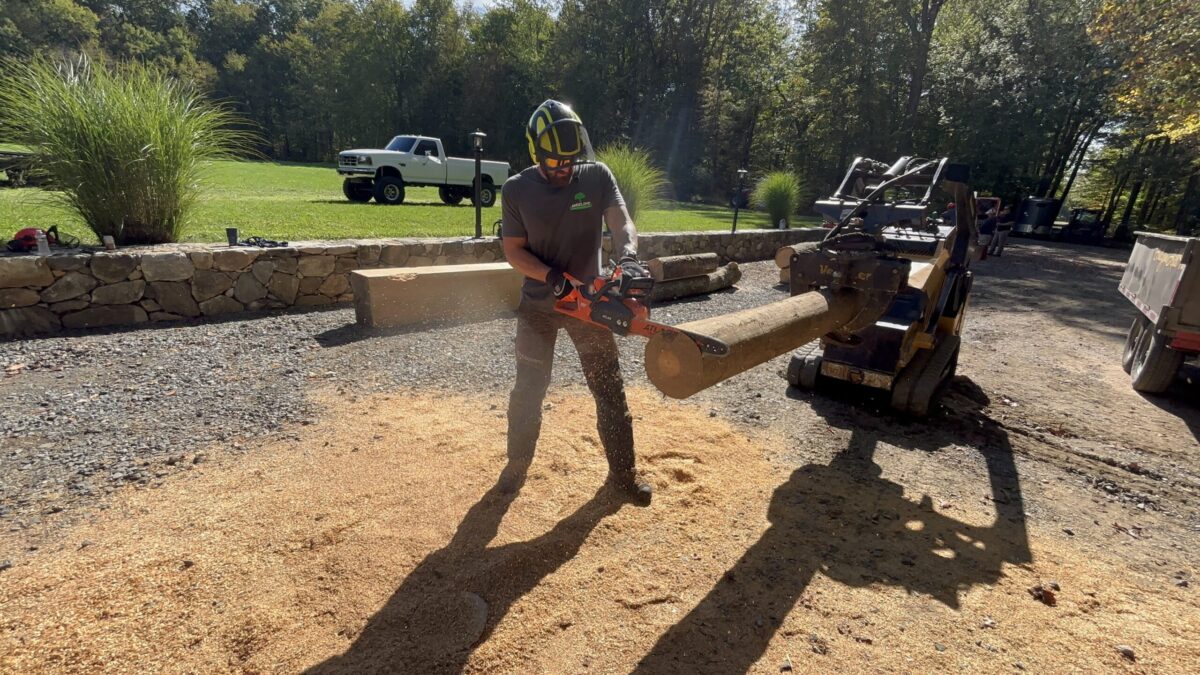
While price isn’t included in our overall ranking, it’s hard to ignore when evaluating a tool’s overall appeal. That’s why we highlight a best value winner—recognizing a saw that delivers exceptional performance relative to its cost.
Our best value winner is Atlas. In recent years, this brand has significantly stepped up its game. Atlas tools now offer impressive performance at a low cost, and their 80V chainsaw is a prime example.
This saw finished third in both our speed cut and cross-cut tests. While it may not be the most ergonomic or feature-rich option, it’s available for around $150—an outstanding value, no matter your opinion of the brand.
Overall Impression

The 2025 16″–18″ battery chainsaw lineup demonstrates significant advancements. Modern battery saws handle both homeowner and professional tasks with power, efficiency, and reliability. With improved battery technology, motor design, and user-focused features, today’s cordless chainsaws are practical, high-performing, and increasingly capable—truly ready for any cutting task.



